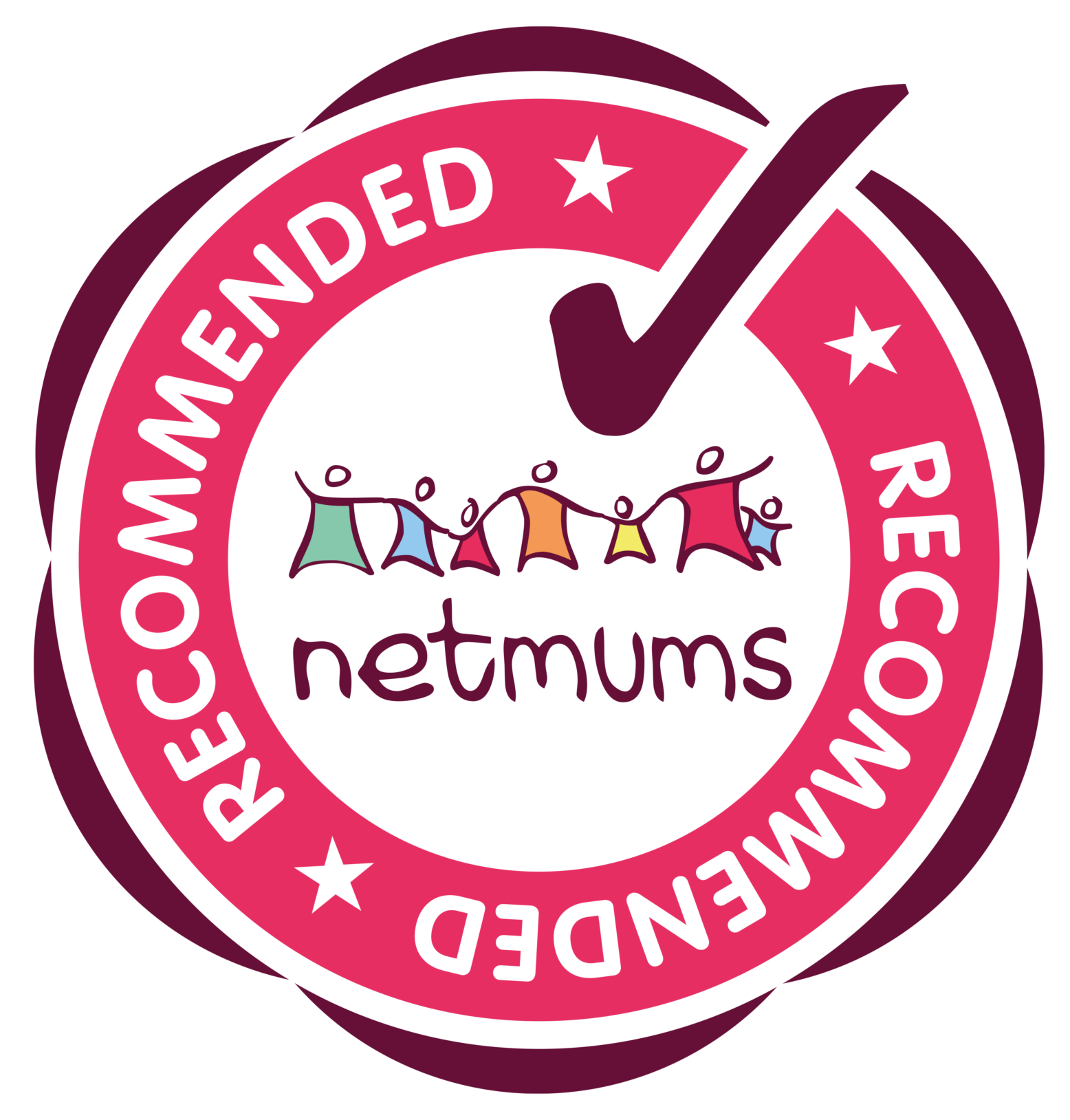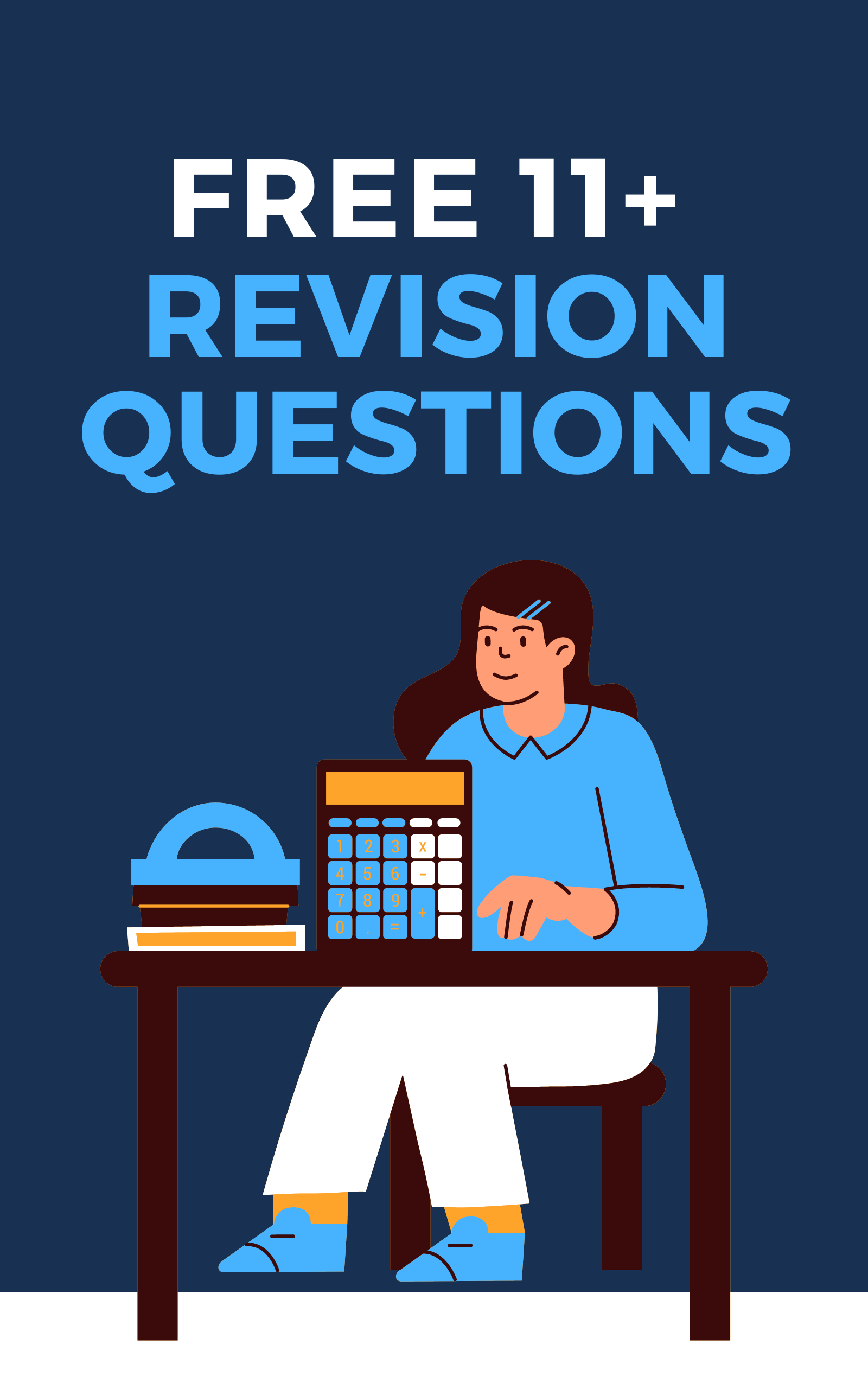

11+ creative writing guide with 50 example topics and prompts
by Hayley | Nov 17, 2022 | Exams , Writing | 0 comments
The 11+ exam is a school entrance exam taken in the academic year that a child in the UK turns eleven.
These exams are highly competitive, with multiple students battling for each school place awarded.
The 11 plus exam isn’t ‘one thing’, it varies in its structure and composition across the country. A creative writing task is included in nearly all of the 11 plus exams, and parents are often confused about what’s being tested.
Don’t be fooled into thinking that the plot of your child’s writing task is important. It is not.
The real aim of the 11+ creative writing task is to showcase your child’s writing skills and techniques.
And that’s why preparation is so important.
This guide begins by answering all the FAQs that parents have about the 11+ creative writing task.
At the end of the article I give my best tips & strategies for preparing your child for the 11+ creative writing task , along with 50 fiction and non-fiction creative writing prompts from past papers you can use to help your child prepare. You’ll also want to check out my 11+ reading list , because great readers turn into great writers.
Do all 11+ exams include a writing task?
Not every 11+ exam includes a short story component, but many do. Usually 3 to 5 different prompts are given for the child to choose between and they are not always ‘creative’ (fiction) pieces. One or more non-fiction options might be given for children who prefer writing non-fiction to fiction.
Timings and marking vary from test to test. For example, the Kent 11+ Test gives students 10 minutes for planning followed by 30 minutes for writing. The Medway 11+ Test gives 60 minutes for writing with ‘space allowed’ on the answer booklet for planning.
Tasks vary too. In the Kent Test a handful of stimuli are given, whereas 11+ students in Essex are asked to produce two individually set paragraphs. The Consortium of Selective Schools in Essex (CCSE) includes 2 creative writing paragraphs inside a 60-minute English exam.
Throughout the UK each 11+ exam has a different set of timings and papers based around the same themes. Before launching into any exam preparation it is essential to know the content and timing of your child’s particular writing task.
However varied and different these writing tasks might seem, there is one key element that binds them.
The mark scheme.
Although we can lean on previous examples to assess how likely a short story or a non-fiction tasks will be set, it would be naïve to rely completely on the content of past papers. Contemporary 11+ exams are designed to be ‘tutor-proof’ – meaning that the exam boards like to be unpredictable.
In my online writing club for kids , we teach a different task each week (following a spiral learning structure based on 10 set tasks). One task per week is perfected as the student moves through the programme of content, and one-to-one expert feedback ensures progression. This equips our writing club members to ‘write effectively for a range of purposes’ as stated in the English schools’ teacher assessment framework.
This approach ensures that students approaching a highly competitive entrance exam will be confident of the mark scheme (and able to meet its demands) for any task set.
Will my child have a choice of prompts to write from or do they have to respond to a single prompt, without a choice?
This varies. In the Kent Test there are usually 5 options given. The purpose is to gather a writing sample from each child in case of a headteacher appeal. A range of options should allow every child to showcase what they can do.
In Essex, two prescriptive paragraphs are set as part of an hour-long English paper that includes comprehension and vocabulary work. In Essex, there is no option to choose the subject matter.
The Medway Test just offers a single prompt for a whole hour of writing. Sometimes it is a creative piece. Recently it was a marketing leaflet.
The framework for teaching writing in English schools demands that in order to ‘exceed expectations’ or better, achieve ‘greater depth’, students need to be confident writing for a multitude of different purposes.
In what circumstances is a child’s creative writing task assessed?
In Essex (east of the UK) the two prescriptive writing tasks are found inside the English exam paper. They are integral to the exam and are assessed as part of this.
In Medway (east Kent in the South East) the writing task is marked and given a raw score. This is then adjusted for age and double counted. Thus, the paper is crucial to a pass.
In the west of the county of Kent there is a different system. The Kent Test has a writing task that is only marked in appeal cases. If a child dips below the passmark their school is allowed to put together a ‘headteacher’s appeal’. At this point – before the score is communicated to the parent (and probably under cover of darkness) the writing sample is pulled out of a drawer and assessed.
I’ve been running 11+ tutor clubs for years. Usually about 1% of my students passed at headteacher’s appeal.
Since starting the writing club, however, the number of students passing at appeal has gone up considerably. In recent years it’s been more like 5% of students passing on the strength of their writing sample.
What are the examiners looking for when they’re marking a student’s creative writing?
In England, the government has set out a framework for marking creative writing. There are specific ‘pupil can’ statements to assess whether a student is ‘working towards the expected standard,’ ‘working at the expected standard’ or ‘working at greater depth’.
Members of the headteacher panel assessing the writing task are given a considerable number of samples to assess at one time. These expert teachers have a clear understanding of the framework for marking, but will not be considering or discussing every detail of the writing sample as you might expect.
Schools are provided with a report after the samples have been assessed. This is very brief indeed. Often it will simply say ‘lack of precise vocabulary’ or ‘confused paragraphing.’
So there is no mark scheme as such. They won’t be totting up your child’s score to see if they have reached a given target. They are on the panel because of their experience, and they have a short time to make an instant judgement.
Does handwriting matter?
Handwriting is assessed in primary schools. Thus it is an element of the assessment framework the panel uses as a basis for their decision.
If the exam is very soon, then don’t worry if your child is not producing immaculate, cursive handwriting. The focus should simply be on making it well-formed and legible. Every element of the assessment framework does not need to be met and legible writing will allow the panel to read the content with ease.
Improve presentation quickly by offering a smooth rollerball pen instead of a pencil. Focus on fixing individual letters and praising your child for any hint of effort. The two samples below are from the same boy a few months apart. Small changes have transformed the look and feel:

Sample 1: First piece of work when joining the writing club

Sample 2: This is the same boy’s improved presentation and content
How long should the short story be.
First, it is not a short story as such—it is a writing sample. Your child needs to showcase their skills but there are no extra marks for finishing (or marks deducted for a half-finished piece).
For a half hour task, you should prepare your child to produce up to 4 paragraphs of beautifully crafted work. Correct spelling and proper English grammar is just the beginning. Each paragraph should have a different purpose to showcase the breadth and depth of their ability. A longer – 60 minute – task might have 5 paragraphs but rushing is to be discouraged. Considered and interesting paragraphs are so valuable, a shorter piece would be scored more highly than a rushed and dull longer piece.
I speak from experience. A while ago now I was a marker for Key Stage 2 English SATs Papers (taken in Year 6 at 11 years old). Hundreds of scripts were deposited on my doorstep each morning by DHL. There was so much work for me to get through that I came to dread long, rambling creative pieces. Some children can write pages and pages of repetitive nothingness. Ever since then, I have looked for crafted quality and am wary of children judging their own success by the number of lines competed.
Take a look at the piece of writing below. It’s an excellent example of a well-crafted piece.
Each paragraph is short, but the writer is skilful.
He used rich and precisely chosen vocabulary, he’s broken the text into natural paragraphs, and in the second paragraph he is beginning to vary his sentence openings. There is a sense of control to the sentences – the sentence structure varies with shorter and longer examples to manage tension. It is exciting to read, with a clear awareness of his audience. Punctuation is accurate and appropriate.

11+ creative writing example story
How important is it to revise for a creative writing task.
It is important.
Every student should go into their 11+ writing task with a clear paragraph plan secured. As each paragraph has a separate purpose – to showcase a specific skill – the plan should reflect this. Built into the plan is a means of flexing it, to alter the order of the paragraphs if the task demands it. There’s no point having a Beginning – Middle – End approach, as there’s nothing useful there to guide the student to the mark scheme.
Beyond this, my own students have created 3 – 5 stories that fit the same tight plan. However, the setting, mood and action are all completely different. This way a bank of rich vocabulary has already been explored and a technique or two of their own that fits the piece beautifully. These can be drawn upon on the day to boost confidence and give a greater sense of depth and consideration to their timed sample.
Preparation, rather than revision in its classic form, is the best approach. Over time, even weeks or months before the exam itself, contrasting stories are written, improved upon, typed up and then tweaked further as better ideas come to mind. Each of these meets the demands of the mark scheme (paragraphing, varied sentence openings, rich vocabulary choices, considered imagery, punctuation to enhance meaning, development of mood etc).
To ensure your child can write confidently at and above the level expected of them, drop them into my weekly weekly online writing club for the 11+ age group . The club marking will transform their writing, and quickly.
What is the relationship between the English paper and the creative writing task?
Writing is usually marked separately from any comprehension or grammar exercises in your child’s particular 11+ exam. Each exam board (by area/school) adapts the arrangement to suit their needs. Some have a separate writing test, others build it in as an element of their English paper (usually alongside a comprehension, punctuation and spelling exercise).
Although there is no creative writing task in the ISEB Common Pre-test, those who are not offered an immediate place at their chosen English public school are often invited back to complete a writing task at a later date. Our ISEB Common Pre-test students join the writing club in the months before the exam, first to tidy up the detail and second to extend the content.
What if my child has a specific learning difficulty (dyslexia, ADD/ADHD, ASD)?
Most exam boards pride themselves on their inclusivity. They will expect you to have a formal report from a qualified professional at the point of registration for the test. This needs to be in place and the recommendations will be considered by a panel. If your child needs extra arrangements on the day they may be offered (it isn’t always the case). More importantly, if they drop below a pass on one or more papers you will have a strong case for appeal.
Children with a specific learning difficulty often struggle with low confidence in their work and low self-esteem. The preparations set out above, and a kids writing club membership will allow them to go into the exam feeling positive and empowered. If they don’t achieve a pass at first, the writing sample will add weight to their appeal.
Tips and strategies for writing a high-scoring creative writing paper
- Read widely for pleasure. Read aloud to your child if they are reluctant.
- Create a strong paragraph plan where each paragraph has a distinct purpose.
- Using the list of example questions below, discuss how each could be written in the form of your paragraph plan.
- Write 3-5 stories with contrasting settings and action – each one must follow your paragraph plan. Try to include examples of literary devices and figurative language (metaphor, simile) but avoid clichés.
- Tidy up your presentation. Write with a good rollerball pen on A4 lined paper with a printed margin. Cross out with a single horizontal line and banish doodling or scribbles.
- Join the writing club for a 20-minute Zoom task per week with no finishing off or homework. An expert English teacher will mark the work personally on video every Friday and your child’s writing will be quickly transformed.
Pressed for time? Here’s a paragraph plan to follow.
At Griffin Teaching we have an online writing club for students preparing for the 11 plus creative writing task . We’ve seen first-hand what a difference just one or two months of weekly practice can make.
That said, we know that a lot of people reading this page are up against a hard deadline with an 11+ exam date fast approaching.
If that’s you (or your child), what you need is a paragraph plan.
Here’s one tried-and-true paragraph plan that we teach in our clubs. Use this as you work your way through some of the example prompts below.
11+ creative writing paragraph plan
Paragraph 1—description.
Imagine standing in the location and describe what is above the main character, what is below their feet, what is to their left and right, and what is in the distance. Try to integrate frontend adverbials into this paragraph (frontend adverbials are words or phrases used at the beginning of a sentence to describe what follows—e.g. When the fog lifted, he saw… )
Paragraph 2—Conversation
Create two characters who have different roles (e.g. site manager and student, dog walker and lost man) and write a short dialogue between them. Use what we call the “sandwich layout,” where the first person says something and you describe what they are doing while they are saying it. Add in further descriptions (perhaps of the person’s clothing or expression) before starting a new line where the second character gives a simple answer and you provide details about what the second character is doing as they speak.
Paragraph 3—Change the mood
Write three to four sentences that change the mood of the writing sample from light to gloomy or foreboding. You could write about a change in the weather or a change in the lighting of the scene. Another approach is to mention how a character reacts to the change in mood, for example by pulling their coat collar up to their ears.
Paragraph 4—Shock your reader
A classic approach is to have your character die unexpectedly in the final sentence. Or maybe the ceiling falls?
11+ creative writing questions from real papers—fictional prompts
- The day the storm came
- The day the weather changed
- The snowstorm
- The rainy day
- A sunny day out
- A foggy (or misty) day
- A day trip to remember
- The first day
- The day everything changed
- The mountain
- The hillside
- The old house
- The balloon
- The old man
- The accident
- The unfamiliar sound
- A weekend away
- Moving house
- A family celebration
- An event you remember from when you were young
- An animal attack
- The school playground at night
- The lift pinged and the door opened. I could not believe what was inside…
- “Run!” he shouted as he thundered across the sand…
- It was getting late as I dug in my pocket for the key to the door. “Hurry up!” she shouted from inside.
- I know our back garden very well, but I was surprised how different it looked at midnight…
- The red button on the wall has a sign on it saying, ‘DO NOT TOUCH.’ My little sister leant forward and hit it hard with her hand. What happened next?
- Digging down into the soft earth, the spade hit something metal…
- Write a story which features the stopping of time.
- Write a story which features an unusual method of transport.
- The cry in the woods
- Write a story which features an escape
11+ creative writing questions from real papers—non-fiction prompts
- Write a thank you letter for a present you didn’t want.
- You are about to interview someone for a job. Write a list of questions you would like to ask the applicant.
- Write a letter to complain about the uniform at your school.
- Write a leaflet to advertise your home town.
- Write a thank you letter for a holiday you didn’t enjoy.
- Write a letter of complaint to the vet after an unfortunate incident in the waiting room.
- Write a set of instructions explaining how to make toast.
- Describe the room you are in.
- Describe a person who is important to you.
- Describe your pet or an animal you know well.
11 Plus creative writing tips and examples

Preparing for your 11 Plus creative writing exam doesn’t have to be a worry. We help you here with 11 Plus creative writing tips and examples to prepare you for the exam. We're here to help you practice and improve your writing techniques and creative writing skills so you’re ready for your 11 Plus exams .
Creative writing can be really fun – you can explore something you really want to and write about something that means a lot to you. Although, we know it can be a little bit worrying for some students that don’t enjoy writing as much or don’t feel confident in their writing skills.
So, ahead of your 11 Plus exams we want to help you prepare with these 11 Plus creative writing tips and strategies.
What Is 11 Plus Creative Writing?
The 11 Plus creative writing exam assesses a child’s ability to compose structured and engaging pieces of written work. It’s designed to evaluate a student’s fluency, imaginative capabilities, grammar, punctuation and overall ability to write creatively.
What does the 11 Plus creative writing exam include?
The 11 Plus creative writing exam is usually 25-30 minutes and could involve the continuation of a storyline that you’ll be provided with. Alternatively you might be asked to write a short piece of your own in response to a visual stimulus – this could be describing a character or writing something from their perspective, like a diary entry.
Here are some the potential writing tasks you could be given for your 11 Plus creative writing exam:
Descriptive task – continuing on a short story that you’ll be provided with, or describing a place or situation that your character finds themselves in.
Persuasive task – you could be asked to write a letter or an article with the goal to persuade the reader to feel or act in a certain way after reading it by using emotive language.
Narrative task – this would usually involve writing your own short story.
Expository task – this could involve writing an article or set of instructions designed to inform the reader how to go about doing something properly.
What are the 11 Plus creative writing topics?
Prior to starting your creative writing piece, you’ll need to have a topic. It’s important that the topic remains at the centre of everything you’re writing, as it will shape the direction of the story and the characters
You can think of a topic as a theme for your story. This can be really simple, as a simple theme will really help write a story in your own way.
For your 11 plus creative writing exam, you’ll likely be presented with a topic that you then have to write about. Often these topics will have you writing about:
Being lost or scared, capturing the feeling of being alone and writing a story about overcoming it.
Doing something exciting or achieving something impressive, the best day of your life so far.
A holiday or an adventure
Travelling to the city or countryside and what you might experience there.
Writing a short story on each of the topics above can be a great way to familiarise yourself with creative writing.
What do examiners look for in creative writing?
Successfully passing your creative writing 11 Plus creative writing exam is a lot less daunting if you know what the examiners are looking for in your creative writing.
Unlike other exams, it can be difficult to prepare the exact answers. It’s not like a sum in maths, where there’s only one correct answer after your working out. That doesn’t mean there aren’t specific things that examiners are looking for. Let’s take a look at those:
A well planned piece of writing
Strong creativity and good imagination
A fluent writing style
Good and correct use of punctuation
Good use of English grammar
Complex sentences that are broken in an easy-to-read way with commas
Good spelling
Good and exciting vocabulary
Neat, easy-to-read handwriting
You can use those things as a checklist for your creative writing. When you write practice pieces, read them back and see if you can check off everything on the list of things that examiners are looking for. This will not only highlight areas needing improvement but will also act as a confidence-building tool.
11 Plus creative writing marking scheme
Your creative writing task will be worth 50% of your English 11 plus exam paper. So, you’ll want to make sure you’re well prepared!
Part of preparing for the creative writing task is ensuring you know how the exam will be marked. Here’s what your examiner will look at when they mark your work:
The plot – you need to write a piece that’s got an engaging plot, but more importantly it needs to follow a strong beginning, middle and end structure. We’ll be getting more detail about that further on. Make sure you plan your story to ensure you have a well-structured and easy-to-follow plot.
Vocabulary – Make sure you’re using a wide range of adjectives, nouns and adverbs. Rather than describing everything the same way, come up with some other engaging ways to write something. Use a good amount of complex words that you normally wouldn’t use (and make sure you understand what they mean so you use them correctly).
Writing devices – no, your examiner isn’t looking at what pen you used to write the exam. Writing devices refer to things like metaphors, similes, tension building short sentences, alliteration and irony. Try sentences like “he was as fast as a runaway train,” for a simile example. See if you can write a few sentences that each use a different writing device to practice.
Grammar – now is a good time to start practising your grammar skills. Make sure you’re using commas correctly when you write long sentences, and that you format your character dialogue properly. There are a few common grammar mistakes that may catch you out, so keep practising.
Spelling – While avoiding spelling mistakes is good, to get great marks on your exams you’ll want to use complicated words and spell them correctly. It might be tempting to avoid complicated words if you’re not sure how to spell them but it’s actually not a bad idea to use one or two complicated words and spell them so they’re recognisable than to use no complicated words at all.
11 Plus creative writing tips and techniques
Every great writer has one thing in common – writing techniques! Everyone can develop their creative writing skills by practising these creative writing tasks.
Getting creative
If you want to write a story this should be your starting point! Have a good think about the topic for your story and the character you’ll be writing about. Take a minute to sit back, close your eyes and think about the world of your story. Can you see it?
If you can visualise the world of your story, then you’ve got a good idea to work with! Get creative about the story and think about directions that it can go, and the characters you can work with.
Planning and structure
Once you’ve got your theme in place you need to have a think about the direction of your story. Think about how your story starts, how you want it to end and then think about how you want your main character to get there.
Remember the classic story structure of beginning, middle and end:
Use the beginning of your story to introduce your character, where they are and maybe one of two of their friends. Maybe even try to set them a goal at this point, what’s something they really, really want?
Introduce the middle of your story with a problem or an obstacle for your main character to overcome. This is going to be the longest section of your story, so make sure you don’t spend too long with the opening! Think about how your character would overcome the problem you’ve introduced for them.
In the end your main character overcomes the problem that you introduced for them. Think about what they would feel, the relief they’d experience and how you can sum that up in a paragraph or two.
There are lots of different ways to write a story, but following the beginning, middle and end structure like this will really help you plan. Try to just write a few short sentences from the beginning, middle and end, then expand it out from there.
If you need more inspiration to improve your writing skills, why not see David Walliam’s top ten writing tips ?
Creative writing examples: using the senses
Remember – writing descriptively helps your ideas to really come across in what you’re writing. The person reading your creative writing piece can’t read your mind!
A great way to really set a scene in your creative writing is to use the senses:
Sight – what can your character see? Describe how the scene around them looks, and be sure to use some good adjectives.
Sound – can your character hear anything? Even if your character can’t hear anything, that can sometimes be a great way to set a scene. Or maybe your character can hear lots of noise? Either way, make sure the reader knows that.
Smell – what does the place your character’s in smell like? You can make a disgusting, murky bog seem even filthier by describing how smelly it is to the reader. We all react strongly to smells, good or bad, so make sure you’re describing them to your reader.
Touch – what can your character feel? Are they sitting on a really soft sofa? Is the cat they’re stroking extra fluffy? Describe everything your character feels!
Taste – is your character tasting anything? Of course, if your character’s eating you need to describe it. How sweet are the sweets they’re eating? How bitter is the medicine they had to take? You could even get creative and describe a smell so bad that your character can almost taste it!
Get creative when you write about senses. You don’t have to cover every sense in order, you can mix things up in a paragraph or two, and sometimes you only need to cover two or three senses in a particular scene. Make sure you’re always telling your audience what your character is experiencing so the reader can put themselves in your character’s shoes. Utilising this technique ensures the reader engages with your creative writing piece.
Fluent writing
Practice makes perfect when it comes to fluent writing. To practice fluent writing, set yourself a creative writing task as if you were taking your 11 Plus creative writing test.
Try keeping the stories short. Just a few paragraphs so you can do a few attempts. When you’re finished, read them back to yourself out loud. See if the sentences are easy to read out loud. If they’re not, it might be good to rewrite them in a way that makes them easier to say. Try doing this out loud too, rephrase the sentence so it means the same thing but is easier to say.
Reading out loud is not something you will be doing at the exam, so practicing your fluency at home is the key. Never be scared to do a few practice stories before your 11 Plus creative writing exam.
Proofreading Your Creative Writing
Finally, once you’ve finished writing and you’re happy with how fluent your piece sounds you’ve got to proofread it! That means checking your grammar, your punctuation and spelling.
Make sure you’ve only used capital letters where they need to be used – the start of sentences and the names of people and places.
Make sure you’ve used quotation marks correctly – start a new paragraph for when a character starts speaking, open with a quotation mark and then write what they said before closing with a quotation mark. Make sure you carry on writing after they’ve finished speaking with a new paragraph!
Have you checked the tenses? Make sure you’re not mixing up past, present and future tenses !
Have you used enough punctuation? Make sure all your sentences end with full stops, but also that questions end with a question mark. Space out long sentences with a well-placed comma and make sure if a character says something loudly or is surprised that you’re using exclamation marks.
Check your spelling! Are there any words you struggle with? Go back and check them to make sure they look right. If you’re really struggling to spell a word, maybe use a different one for your creative writing piece – lots of writers do this! If you do this a lot, then it might be worth doing some spelling practice.
How do I prepare for creative writing?
When it comes to 11 Plus creative writing exams it’s difficult to find something specific to revise – unlike exams in maths or English spelling, creative writing exams don’t have a right or wrong answer. So, don’t get overwhelmed by reading countless creative writing books.
The best way to prepare for a creative writing test is to practice all the key points we mentioned above. Set yourself some small creative writing tasks, practice your spelling and get some help fromyour teachers. You could also ask your parents or guardians about tuition to help you prepare for your creative writing .
We also have some creative writing book suggestions and worksheets that could help you prepare.
11 Plus creative writing examples books
If you’re looking for some books to help you prepare for your 11 Plus creative writing exam or want to find some creative writing examples, here are some of our favourites:
11+ Essentials Creative Writing Examples Book 1 (First Past the Post)
11+ Essentials Creative Writing Examples Book 2 (First Past the Post)
Bond 11+: English Focus on Writing: 9-11 years
RSL Creative Writing, Book 1: KS2, KS3, 11 Plus & 13 Plus – Workbook For Ages 9 Upwards
11+ Creative Writing
Remember to always ask a parent or guardian before buying anything online.
11 Plus creative writing tasks and worksheets
Here are some of our own worksheets that’ll help you prepare and improve your creative writing skills:
Creating characters
Creating dilemmas
Creating settings
My favourite author
Try an 11 plus creative writing tutor
If you’re worried about your 11 plus creative writing exam, that’s okay. There are numerous ways you can prepare without getting yourself overwhelmed. We’ve already covered how practice makes perfect when it comes to writing, so creative writing courses could be a great way for you to improve your confidence.
11 Plus tuition will also help with your creative writing. Explore Learning’s expert tutors can help you work on your story planning and structure, grammar, writing fluency and vocabulary.
Don’t let yourself get overwhelmed about your 11 Plus creative writing task, we’re here to help you do your best.
Tuition from £175 / month
Start your 11 Plus and Entrance Exam journey today.
Cancel anytime
No joining fee
In centre or online
Memberships to suit you
11 Plus creative writing FAQs
How to prepare for 11 plus creative writing.
Prepare by understanding the 11 Plus creative writing requirements. Engage in regular practice on various topics like adventures, challenges and feelings. Focus on grammar, punctuation, fluency, spelling and vocabulary. Always proofread and consider getting feedback.
Is there creative writing in the 11 Plus exam?
The 11 Plus exam may include a creative writing component, often lasting 25-30 minutes, where a student demonstrates their narrative and language skills.
What are the different types of creative writing 11+?
The 11 Plus creative writing includes descriptive, persuasive and narrative tasks. Studentsmay be asked to craft or add to stories, describe scenarios, write persuasive letters or informative pieces.
How do I study for a creative writing exam?
Study by practising various creative writing tasks regularly. Focus on language proficiency, structure your narratives and proofread. For tailoredsupport, consider 11 Plus tuition .

Your nearest centres
Sorry, we don't have any centres within {{distance}} miles, explore learning online tuition.
We also offer online tuition to flexibly fit into your family’s life.
Results from outside {{distance}} miles
Please select a centre.
Showing {{count}} closest to '{{postcode}}'
{{address}}
{{distance}} miles
Can't find a centre near you?
Search again.
Ten 11+ & 13+ Creative Writing Tips For Excellent Exam Stories
When my students get the hang of these techniques, it makes an enormous difference to their creative writing – but it takes practice.
M y advice for 11 plus stories in this article applies just as well to 8 plus, 13 plus or GCSE … in fact, although I have written with 11 plus creative writing in mind, my suggestions should be relevant at any level.
I’ve been teaching these things to young people for many years, and I hope you also find them useful. Please write a comment if you do!
The creative writing materials offered by 11 Plus Lifeline teach students to use all the techniques explained on this page.
Every writing paper has full example answers, as well as detailed step-by-step discussions, marking guidelines and story-planning advice. Papers are structured to help students develop high-level skills – and just as importantly, to enjoy themselves!
Click on the infographic to view a zoomable version in a new tab:
Share this Image On Your Site
1 – before you write, daydream.
If you can see your story’s world in your head, you will be able to describe it powerfully.
If you can’t, your descriptions risk being superficial and your writing uninteresting.
After a little daydream, your next step is to turn it into a simple plan:
THE STORY PLANNING PROCESS
1) the main event.
The first thing to write in your plan is the main event in your story (see point 2 , below). Keep this simple for now.
2) Your Main Character
Next, jot down a few notes about your main character (see point 3 ). What is interesting about them? Try to imagine them sitting in the place next to you. See them clearly in your mind. Who are they, really?
3) Getting There
Now note down some ideas for how you will get to the main event. Make this simple too: don’t write more than a couple of lines.
4) … And Getting Out Of There!
Finally, write a few thoughts about what will happen after the event: why does it matter, and – above all else – how does it affect your characters?
The reason I suggest this order of planning is that when you only have a short time to write, there are two important things which will hold your story together: the main event (what it is about ) and your central character (who gives us a reason to care ).
Everything else should be very simple, allowing you to focus on describing beautifully.
In fact, you can probably guess what the next of my 11 plus tips is …
2 – Keep things simple! In an 11 plus exam story, choose one main plot event & bring it to life.
If there are too many things happening, your descriptive skills may get lost.
What’s more, once there are lots of dramatic events in a story, many students struggle to write about all of them properly.
Look at this example:
As they walked through the forest a tree fell and nearly crushed them. That was close , thought Claudia. Then they sat down to scrutinise the map.
It’s good to describe the small details of life – and especially with an interesting verb like “scrutinise”.
But if you forget to fully describe big events, such as a tree almost killing your characters, the effect is very peculiar. It implies that a near-death experience is no more interesting than reading a map!
Either give dramatic events their due importance, by describing them powerfully and giving a clear sense of your characters’ reactions, or steer clear of them altogether.
This is often a problem in exam stories with too much action, or with too many plot events in general.
It’s best to structure your story around one main event, which isn’t too extreme. Spend the rest of your time building up to it and showing its after-effects.
3 – Focus on one character
Just as it’s best to focus your writing around one main event, it makes sense to have one core character.
You probably won’t have time to make more than one person interesting and believable in a thirty minute writing exam. If you try, you’re at risk of coming unstuck.
(If you feel really confident, you might manage to develop two characters: a brother and sister, for example. But in the exam itself, ask yourself: Is it worth the risk? )
Make your main character really interesting, and only refer to others in passing.
4 – Put a little dialogue in … but don’t write a play script!
“Because writing dialogue is easier than thinking,” he said.
“That makes sense,” I said, “because otherwise I can’t explain why we’ve been chatting pointlessly for two full pages.”
Dialogue is excellent in an exam piece, and you should aim to include some in every story. However, there are risks, demonstrated by the example above!
Don’t let your story turn into a play script.
Use a little dialogue in 11+ creative writing, but focus on your descriptions of the setting, characters and events.
When you do write conversations, don’t stop describing. Avoid repeating “I said”, “she said”, “Mum answered”, and so on.
Instead, add little details which help the reader to imagine the scene as the characters talk.
Describe how people move around between saying things, the expressions on their faces, and so on:
“Because writing dialogue is easier than thinking,” he replied, a hint of a smile twitching like a worm at the edge of his mouth.
A quick note about paragraphing:
Examiners are likely to expect that a new speaker begins on a new line, if somebody else has already spoken in the paragraph.
This doesn’t happen in every book you’ll read, but it’s a convention – a normal way of doing things – which you are supposed to know about.
Look at this way of writing the example at the top, and think about where a sentence should begin a new line :
“Why are we still talking?” I said. “Because writing dialogue is easier than thinking,” he said. “That makes sense,” I said, “because otherwise I can’t explain why we’ve already been talking for two full pages.”
Now check the original again, to see whether you were right!
And now for the advertising break. Time to run away and make a cup of tea …
RSL Creative Writing is the children’s writing course from RSL Educational, written by Robert Lomax.
It’s perfect for Key Stages 2 and 3 and for 11+ exam preparation, at home or in the classroom. It’s also ideal for anybody aged 9 or above who enjoys writing and wants to do it better.
Click on the covers to learn more and view sample pages from the books:
RSL Creative Writing: Book 1
Rsl creative writing: book 2, rsl creative writing: book 3, the rsl creative writing collection (£40.47), 5 – short stories don’t need an introduction.
Robert was 33. He lived in a small flat with his cat and his wife. One day, he decided to go for a walk to the shops. The shops weren’t very far away: it took about ten minutes to get there. It was a cloudy day. It was the middle of February and it was a bit cold but not cold enough for a scarf. The road was in need of some repairs. He was wearing a blue jumper and black shoes and some fairly old jeans.
You don’t need to introduce your story as though it is a 300 page novel!
The reader doesn’t have to know everything about the main character, and especially not at the start. This way you waste a paragraph, when you might only have time for four or five in your whole story.
Anything that really matters about your characters can be mentioned along the way. In creative writing for 11 plus exams, everything else can be left out.
Get into the main business of your story from the very first line.
6 – Show, don’t tell … Whether you’re writing an 11 plus story, or whether you’re a famous novelist!
In real life, we can’t see what is in other people’s minds.
We have to work it out from what they do – and sometimes from what they say, although this can be very misleading!
For this reason, other people’s creative writing is often most interesting when we have to work out what characters are thinking and feeling.
This makes the characters seem like real people whose thoughts we can’t immediately know.
It also helps to get us – the readers – involved in the story by making us do some thinking for ourselves!
You might initially want to write this:
Simon looked up. He was angry.
But this is much more interesting to read:
As Simon looked up I could see his jaw muscles flexing.
Have a go at re-writing the following paragraph to make it more interesting . You can change things around as much as you like.
I admit: this is the sort of thing which you will sometimes read in a book. It isn’t necessarily always bad writing, in itself.
However, it is a missed opportunity to bring a character to life. In a time-limited 11-plus exam story, you need to take advantage of such moments.
The rule is:
Where possible, show me what a character is feeling … don’t tell me .
Have a look at my way of re-writing the paragraph above:
All Anna’s thoughts have gone.
Instead, there are some strong clues which steer you towards a particular idea about what she thinks and how she feels: but you still have to decide for yourself.
This forces you to imagine Anna clearly in your own mind.
How does my answer compare to your approach?
7 – Use a range of senses throughout your story
This is good writing. The trees may be “green” (which is a bit dull), but they are “swaying”, which is an effective detail and more than makes up for it.
The simile in the second sentence (“like wisps of cigar smoke”) is vivid and well planned.
The sandwich bag is “crumpled”, and “bag of bacon” is a nice moment of alliteration to emphasise this robust, commonplace item of food.
But imagine a story which continues in the same way, all the way through.
Everything is visual: a sight image.
For the reader, it is like being in a world without the ability to hear, smell, touch or taste.
Furthermore, the narrator seems to be looking around constantly, noticing everything. Is this normal behaviour?
It’s an unrealistic way of seeing the world, and after a while it becomes exhausting to read.
For a student, there are two simple but very useful lessons:
1) Always think about the five senses (sight, hearing, touch, taste, smell).
2) Sometimes avoid the most obvious sense when describing a thing (see point 8 below).
These tips are easy to apply in your creative writing for 11+, but they make a huge difference.
What’s more, unlike a clumsy simile (see point 9 ), a sensory description rarely ends up harming your writing. It can be effective or ineffective, but that’s another matter!
Take the example above:
“The trees were green and swaying” could become: “The trunks were groaning, and overhead I heard the dull rustle of a thousand fresh leaves slapping against one another.”
There’s nothing startlingly original here, but because it is a slightly less obvious way of describing trees, it creates a much more powerful atmosphere.
If you want a metaphor as well, try turning “dull rustle” into “distant applause” , which makes the leaves seem like a mass of enthusiastic people.
Similarly, “I looked at the bag of bacon sandwiches crumpled on the seat next to me” takes on more life like this:
I smelt something like old sick; then I remembered the bag of bacon sandwiches crumpled on the seat next to me.
Notice how easily similes (“like old sick”) and metaphors happen, almost by themselves, when you focus on describing with a range of senses .
This is one of my most important 11 plus writing tips.
8 – Sometimes describe things using a less obvious sense
Using a range of senses, as I discussed in point 7 , is really, really important.
But how can you come up with surprising, powerful descriptions – descriptions to make the marker stop ticking your work for a second, raise their eyebrows and smile?
Imagine that you are just about to write the following sentence:
It was a cold morning.
But you stop yourself, think for a second, and write this:
I could hear the crackle of thawing ice on car windscreens.
This is much more interesting. Rather than using the sense of touch (a “cold” feeling), you are using a sound: “the crackle of thawing ice”.
There’s a good chance that the reader will think: “Yes! I never considered it before, but you really do hear a sound when ice thaws quickly.”
This version also tells you much more about the weather:
The reader can work out that the night has been exceptionally cold, but also that the temperature is now rising quickly.
The thought process to produce descriptions like this is much simpler than it seems:
1) Think of the sense which is most obvious to describe the thing you are writing about.
3) Think of the second most obvious sense.
4) Ban that too!
5) From the three remaining senses, pick the one which is most useful.
6) Ask yourself how the thing would sound, feel, smell or taste – whichever three of these you have left (you’ve almost certainly banned sight!).
7) Write about it.
9 – Use similes and metaphors carefully in your creative writing
Similes and metaphors are useful (and can be impressive), but they have to make things clearer for the reader, not create confusion.
“She won the sprint like a racing car” asks more questions than it answers.
Was she noisy? Was she travelling at 150 miles per hour?
On the other hand, “She ducked her head and slipped across the line as cleanly as a racing car” helps me to picture the event exactly as intended.
Here’s another simile for speed, which I’ve seen a great many times (you’d hardly believe how many) in 11-plus stories:
Donald wrote like a cheetah.
Does this mean that Donald wrote savagely and meaninglessly, like a wild animal with a pencil jammed between its claws ?
Or perhaps that he wrote largely about the themes of hunting and sleeping ?
My guess is that Donald wrote quickly , but I’m not sure … because if that’s all you meant, WHY DIDN’T YOU JUST SAY IT?
This sort of thing is not really the fault of a young writer, who after all is (hopefully!) doing their best.
It is the fault of those dastardly teachers who advise children to include, for example, “at least one metaphor and two similes” in each story.
The result of this, for most children, is a succession of poorly chosen descriptive tricks, which add nothing.
Indeed, we’ve seen how these things can end up making a story comical for all the wrong reasons!
The right approach to creative writing doesn’t start with the need to include a simile: it starts with the need to describe effectively .
To me, this means allowing the reader to imagine the situation fully, and helping them care what happens.
Let’s play around with the image of Donald writing “like a cheetah”.
What happens if we just get rid of the simile?
Donald wrote quickly.
OK, but it doesn’t tell us much: did he write quickly because he wanted to finish his story before Newsnight , or because he was really excited by his work?
Let’s say that it was the first reason: he wanted to get his work out of the way. Perhaps he was feeling annoyed, given that it might interrupt his favourite TV show.
When somebody is writing rapidly while annoyed, what might this look like?
I imagine Donald’s arm wiggling as the pen moves — especially the elbow. The movement is fast and constant because he is worried about getting the work finished, and because in his irritation he doesn’t much care about its quality.
So I ask myself: What moves to and fro constantly, performing a task in an unimaginative way?
And the first thing I think of is a machine in a factory:
Donald hunched over the page, his arm jerking to and fro with the quick, regular movements of a factory robot.
This sentence by itself would go some way to making your story the best in the exam room.
I hope I’ve persuaded you that with a well-organised thought process, a good simile isn’t too difficult to write!
Because children have been taught to work in this way, a story will often contain the required two similes, a metaphor, a personification, even an interesting alliteration …
… but everything in between is lifeless.
What students need is a different sort of checklist, to help them make the rest of their writing interesting .
I hope this article will give you some ideas!
10 – Stephanie was writing a beautiful story in the 11-plus exam hall. Or was she …?
Suspense is good if it’s appropriate to the story, but don’t jack-knife it in clumsily!
“It was a calm, sunny day. Or was it?” doesn’t really make me curious.
It makes me think that you’re trying to pester me into being excited, rather than persuading me to feel that way through your excellent writing.
If you write in a way that builds suspense by making me interested in the characters and events in the story – while keeping some important information hidden from me, just out of sight – this will speak for itself.
However, not every piece of creative writing needs it!
If you found these story writing tips useful or if you have a question, please leave a comment below! I’d love to have your feedback. (Tick the “Receive email updates” box to receive an email when I reply.)
For the most comprehensive range of resources to help with preparation for the 11+ exam, you might like to try 11 Plus Lifeline (with a money-back guarantee in the first month). Every practice paper has full example solutions, with a detailed discussion and explanation for every question – like being taught by an excellent private tutor. There’s lots of material to help develop creative, high-scoring exam stories!
According to Tutorful, it’s “ the gold standard for independent and grammar school 11-plus preparation ”.
Watch Your First Video Now
Watch your first free 11-plus video straight away. Videos 2 & 3 will reach you by email within a few days.
At the same time, you’ll receive 121 Pages of award-winning RSL practice material, with step-by-step solutions – for free!
I'll also send you some useful information about RSL Educational resources and more advice for exam preparation. You’ll be able to unsubscribe from my emails any time you like.
WATCH VIDEO
89 Comments
If you have any questions, feel free to ask me here. I’ll do my best to help you out!
Hi, I’m preparing my son for 11+. His story ideas are good but he needs to add more details/depth. How can I encourage that? Thanks
That’s a very difficult question to answer, because there is so much that I could say! Many of my suggestions are in the article above. The sample at http://digioh.com/em/27284/164929/84za5s4g4u may offer more ideas. If this is useful, then 11 Plus Lifeline offers many further resources.
What’s the syllabus of creative writing for 11plus. I understand there is no definitive one, it varies with target school as well, but still I’d like to know the min types of writing children should be knowing end of year 6 e.g. story writing, descriptive writing, poetry writing, persuasive writing, diary, reconnect, fiction, non fiction writing, script writing, book/film review, blog writing etc. Really confused with the list of categories and subcategories under each. I just need a good structure with every details. Please help with a detailed table of contents.
Hi Jay. I’m afraid I don’t have such a list – because there isn’t one. Schools can set anything that they like! However, I think getting children used to responding to a range of formats is more important than covering everything. The most common formats are probably: 1) A story based on a title or topic 2) A continuation of a passage (usually the passage already used as a comprehension text) 3) A story based on a picture
You provide excellent tips that we can use to guide our children. Done in a very simple but effective way. Even more – as times are hard and money is tight your generosity shows you truly do wish to help children and not just make money out of them. Thank you
Thank you Alison. I’m glad you found the article useful. Robert
Thank you ever so much for your very useful tips. Would you have some advice (or a sample essay) on writing a descriptive essay based on a given image?
Hi Aparna, There is some relevant content in 11 Plus Lifeline. For more along these lines, keep an eye on the website in the autumn …
Hi Robert, I found the article above very helpful. My daughter is in year 5 and we have just started our 11 plus journey. She seems to be struggling air with creative writing. She has such great ideas and an amazing imaginative mind, however she struggles to express this on paper as compared to her peers also studying for the 11 plus. How can I help her become a better writer?
Speaking as she writes might help: perhaps she will write more fluently if she just thinks of it as a way to record her verbal ideas.
My RSL Creative Writing books might help her to develop her ideas.
What is a good range for the word count for a “continue the story” creative writing task at 10+? I see suggestions of 4-5 paragraphs, but paragraphs vary hugely in length. My son is only writing around 150 words, and I fear this is taking “quality not quantity” to the extreme!
It really depends! Sometimes you’ll be given an 8-10 line answer space, in which case that would be appropriate. On the other hand, if you have 30-40 minutes, you should be pitching for 1 to 1.5 pages. Robert
Thank you so much! Very informative
I’m glad to help!
how much your fees for creative writing, and how many lesson? please let me know [email protected]
Hello Hemang. I’m afraid I don’t work as a tutor these days. However, you might be interested in my creative writing books at https://www.rsleducational.co.uk/rsl-creative-writing . These will take your child through their skills step by step, much as I would if I was teaching them. Good luck! Robert
Hi Sir! Sir, you suggestions are greatly useful. Sir, can you assist me on how to incorporate Strong Verbs in my writings as I do not know many and I struggle on account of it ?
There’s no easy answer, but the best starting point is to look for specific ways of describing things. For instance, instead of “he talked”, you might say “he muttered”, for example. You’ll learn more verbs if you look out for them as you read things, and perhaps note interesting ones down in a book. Good luck!
Dear Robert Hope you are doing well , my son is in year 5 and he is going to set for 11 plus exam for very highly competitive grammar schools , he need help for is creative writing . I advice that you are the best , I’m seeking help from you ,please . Yours sincerely Saha Mcewan
Hello. Have a look at 11 Plus Lifeline , perhaps, and my RSL Creative Writing books. I do intend to release some new things for creative writing in the future: watch this space!
Hi Robert. These are great tips. My question is how to come with effective descriptions that vary. When I do descriptive writing, I describe with only the five senses and often run out of ideas. Also, how can we write in a way that will make a clear image in the readers mind. Thanks for the time
Hi Yatharth! My video at https://youtu.be/LKnvrad6jpw is all about this, so why not have a look at that? If that’s useful, look at https://www.rsleducational.co.uk/product/rsl-creative-writing-1
I completely agree with your article, and as a teacher who prepares children for GCSE and the 11 tests, I employ a lot of the ‘strategies’ you mention. What children need ultimately is time to read, digest and above all enjoy stories and poems and then to talk about what they’ve read and in some ( or maybe a lot of cases) relate the themes and ideas etc in what they have read to their own lives. This I feel, can give a greater sense of ‘reality’ to what they can eventually write; and then we as teachers (and parents) can model how to write ‘good’ creative stories (and include all the SPAG) which can go a long way to ensuring children actually begin to feel that they themselves can be imaginative and write great stories.
Thank you for taking the time to comment, Molly. I very much agree with you.
What children need ultimately is time to read, digest and above all enjoy stories and poems and then to talk about what they’ve read and in some ( or maybe a lot of cases) relate the themes and ideas etc in what they have read to their own lives.
The only thing I’d add to this is that it works both ways: reading informs writing, but the very best way to develop critical reading skills is to become more sophisticated as a writer!
Hi Robert,l am a Creative Writing teacher for 8+ Do you think 6+ can be taught Creative Writing that will yield excellent result? I asked this question from my experience of teaching Creative Writing,I observe that more 6+ struggle with understanding and implementing Creative Writing stages than 8+ Also,I teach Creative Writing easily because I believe I have the skills to teach it but how can I come up with a special syllabus to teach my colleagues how to teach Creative Writing in the class that will be result oriented.
Hello Soremi.
I would not think too much about results, if by that you mean percentage scores, when children are 6 or so and developing their writing. I would focus on their enjoyment and on encouraging them to explore their imagination, creating interestingly described characters and environments. It’s a different situation in 11+ exams, where children must demonstrate certain skills and perform well in comparison with their peers.
However, it is very important to encourage the development of accurate and clear English from an early stage. Creative writing is a good opportunity to uncover and address problems.
I found this very useful and straightforward, and also very funny… The tips will take me flying in my writing!
Thanks Lily-Grace. The work you sent for me to look at this week was very impressive: you’re already flying!
Thanks Robert this description is very helpful
I’m very glad it’s useful. Thanks for commenting!
Hola me gustaria hacer unas infografias mas dinamicas
Thank you for the topic
It’s a pleasure. I hope the advice helps.
I thought that this was a brilliant summary. Thank you very much. Engaging and thoughtful. Very much appreciated.
I’m delighted to hear it. Thank you!
I found your creative writing tips very insightful, a real shame for us it was right at the end of our 11+/13+ preparation.
Thank you Sara. I hope they made some difference, even at a late stage.
Very useful tips! I like the way you have broken down the advice into bite-sized chunks! Thanks Robert
I’m glad you found them helpful! Thanks for commenting.
Great tips, thanks Robert. Do you have tips on non fictional writing as well? E.g. how a child can do a stellar job when asked to write a suggestion letter to the council. My child struggles with writing on everyday things that she deems uninteresting like describing everday things but is flying when writing on imaginary topics. Thanks in advance.
Hi Tolu. I have some resources for less creative subject matter in 11 Plus Lifeline .
I think the best way to add interest to potentially unexciting things, like letters, is with examples. “I think you should do more to reduce bullying, because it discourages children from studying” is not interesting. “Last week, a boy trudged towards me across the playground, clenching and unclenching his fists, with the dead-eyed look of meaningless aggression that I’ve come to know so well. This is happening too often in our school!” is much more impressive.
Thanks for these tips . Would you suggest any topics for DS to practice .
There are a great many writing topics with fully explained example answers in 11 Plus Lifeline . I might add a blog post with some suggested topics in the coming months. Robert
These SPECTACULAR tips helped me a lot when I was planning and writing a story. I think that these AMAZING tips will help me a lot when I am doing the exam. THANKS Robert!!!!
Thanks Raon! I hope you’ll share the link. Good luck in your exam. Robert
Thanks for the tips to improve the writing skill for the content writers and the students.
Thank you Nihal – I’m glad my advice is useful.
What can I Say?
My son is about to take the 11 + and part of the material is creative writing,
Can you recommend any good material please?
The key is reading and I don’t think he reads as much as he should do
Please advise
Hi Fazal. I would of course recommend my own creative writing material in 11 Plus Lifeline . There’s a free sample here .
Reading is certainly important, but it won’t do any magic without good writing practice alongside it.
If your son isn’t keen on reading, trying to push him to read more may not work. However, you can help to improve the quality of the reading he does do, by discussing it whenever possible in a way that encourages him to think about it in more depth. You can also introduce new vocabulary into your conversations, and so on.
Also, the reading list here may help him to find books that he does want to read!
Hi, my son 11, is really struggling with creative writing, the main problem being he can’t think of anything to write about. he’s a clever boy but more into science and computers. He thinks he can’t do it and I’m worried he’s going to freeze in the exam. how can i get him to access his imagination and not panic. Thanks
Practice is certainly the main thing. If he can start to “access his imagination” (a nice phrase) without exam pressure, he is more likely to be able to do so in the test.
When you say that he can’t think of anything to write about, you’re describing a problem that I can relate to. However, it should not be a big concern at 11+, for the simple reason that the best stories tend to be about very little! If he can construct a simple plot, focused on one event – even something very ordinary and apparently dull – then he has what he needs. From that point, all his effort should be focused on describing well, so that the story creates atmosphere and has a believable main character.
The real problem at 11+ is when children have too many creative ideas. They construct complex, overwhelming plots, about which it is impossible to write well – or even plausibly – in the time available.
Hi Robert Have you got any tips for the CSSE style quick 10 mins Continuous Writing tasks please. These have included instructions, descriptions and this year the exam paper included a picture to write about- what’s happening- story /description?
Many thanks for your help.
This is very difficult to answer in a brief comment. I do have some specially designed resources for these CSSE writing tasks in 11 Plus Lifeline , if that is of interest.
If writing creatively, keep the plot to an absolute minimum. Imagine that you are describing a ten second scene from a movie – not writing the plot for a whole film. Focus on effective use of the senses, in particular – very much as I outline in this article. Don’t waste any space introducing your writing.
If describing a picture, the same applies. Focus on details from it, and try to find a logical structure. For example, a character might move around the image, finding things; or you might imagine the scene changing over a period of time.
For instructions, try to visualise the activity as precisely as you can, then use words to convey your thoughts exactly. This will lead to good vocabulary. Rather than saying “Screw the lightbulb into the socket”, say something like this: “Steadying the socket with your spare hand, twist the bulb gently in a clockwise direction until you encounter resistance.” This doesn’t come from trying to be fancy: it comes from very clearly imagining the action before I write.
There is a great deal more to be said, but I hope these pointers are useful.
Great tips and advice here. I have 4 boys, all at different levels of education. This has helped me to help them. Thanks!
That makes me very happy. Good luck to your sons!
Anybody who found this useful might like to read more of my creative advice at https://www.rsleducational.co.uk/creative-writing-less-is-more .
This article is very helpful. Thank you.
Thanks for taking the time to say so!
I found this very helpful, thank you
Hello Good Afternoon and thank you very much for my help. I am a young child preparing the eleven plus. I don’t necessarily have any questions i just don’t have any questions. Good luck on your educative journey.
Good luck to you, Lukas! Well done for taking the initiative and researching your exams.
I am a 8 years old child and I am doing your 11+ RSL comprehension, do you have any tips that might help me improve my writing? Thank you for your help!
Hi Kate! I’d like to help, but I’m not sure how to. You’ve written this under an article about improving your writing, and you’re working on a book that also helps with this. I don’t know what tips to add here. If you could be more specific, perhaps I’ll be able to say something. Good luck with your work! Robert
Hi Robert! I really like your tips and they did improve my daughter’s writing! Thank you so much!
I’m so glad! Well done to her.
Hi Richard, Does cursive or printed handwriting affect the writing score a 11+ level? Thanks in advance.
No, it shouldn’t make any difference. All that matters is that the writing should be easy to read, and that the student can write reasonably quickly.
Hi there, I am doing 13+, My tutor says that I should not use metaphors or similes, but I think I should. Do you have any advice for me on descriptive writing? And can you explain what a metaphor is?
I think you are probably misinterpreting your tutor. A good simile or metaphor, in the right place, is a good thing, but I would guess that your tutor is concerned that you are over-using these things and that this is distracting you from simply writing well. An alternative is that you haven’t quite understood how to use them effectively. A misjudged simile can look odd: using no simile (or metaphor) is better than using a bad one!
For a good explanation of what a metaphor is, see https://www.grammarly.com/blog/metaphor/ .
Hi, I’m currently helping a student prepare for entrance exams, and I just wondered if you could help me with a question. He was struggling with the timed element of creative writing and wanted to know if he DID run out of time, what would a marker prefer? To just leave the piece unfinished, or to quickly make an ending for the story, even if it meant it was quite an abrupt ending that didn’t necessarily do the story justice?
I think it depends on the marker. I’d prefer an unfinished piece to one with something actively bad in it, like a bad ending. However, can they leave an unfinished ending that nonetheless has something final about it: for instance, zoom out and describe the trees swaying in the distance, or the waves, so that there’s a sense of the world rolling on, despite the events in the story? If this is done well, it might even appear that they intended to finish this way.
great work, keep it up.
Amazing website! The content is wonderful. Highly informative indeed.
That’s brilliant to hear. Thank you!
Do you have to pay to get your work marked?
Yes, that’s right. Most people do it via an 11 Plus Lifeline Platinum subscription .
My daughter is not good at creative writing and I am apprehensive as she writes her pre-tests on 11th November . How do I help her with the following formats?
1) A story based on a title or topic 2) A continuation of a passage (usually the passage already used as a comprehension text) 3) A story based on a picture
Hello! I cover all these things in my RSL Creative Writing books – see https://www.rsleducational.co.uk/rsl-creative-writing You will also find creative writing videos covering these things at https://go.easy11plus.org/VIDEOLIST Good luck! Robert
Submit a Comment Cancel reply
Your email address will not be published. Required fields are marked *
Submit Comment

Looking for expert tutors for your child's 11+ exam? With personalised lessons and fun, interactive sessions, look no further!
Enrol your child in our weekly 11+ revision classes where they'll benefit from small groups and individualised learning in all sections of the exam.
- UCAS Guide Home >
- 11+ articles
11 Plus Creative Writing: Exam Preparation Guide
What is the creative writing element of the 11 Plus and what does it include?
Both 11 plus exam boards (GL and CEM) don’t have a creative writing element, however some schools may decide to add this element in to assist with the selection process. For instance, it may be used in cases where two students have very similar scores and so the creative writing piece will be the deciding factor.
Each school will have a different format for the writing element; some schools may ask for a creative piece of writing from scratch and others may ask students to complete a story from a passage they‘re provided with. Independent schools, on the other hand, usually require an essay or creative writing piece as part of the exam.
In private schools, this section is crucial and is always marked, however in grammar schools this section may not always be marked. Nonetheless, it shouldn’t be overlooked as it could be a deciding factor of whether or not your child gets an offer at their target grammar school.

This element of the eleven plus will require students to manage their time well and be able to complete their story in just under an hour. Generally, students are given a scenario or prompt that they are free to interpret in their own way. Students will then be required to put their ideas together in a creative style.
Some examples of past prompts that have come up in grammar and private school 11 Plus exams include:
- Describe a situation which you have experienced which might also be called A Magical Moment, showing what your thoughts and feelings are
- The Prince of Darkness is a Gentleman
- The Broken Window
As you can see from these titles, there’s no specific category that they fall into and they are very unpredictable. The trick here is to ensure your child has lots of practice with these past paper questions, so they can better understand how they’re going to draft their ideas together coherently.
The structure of the writing piece should include:
- A beginning that sets the scene
- Characters who have a motivation behind their actions and drive the plot forward
- An ending that wraps up the original idea that was set out at the beginning
How to prepare for the creative writing part of the exam?
Practice is of course a crucial element of the revision process. It may also be useful to jot down ideas and descriptions of: emotions, actions, characters and the environment. Having these sets of descriptions ready will save lots of time in the actual exam. Even though the emotions and characters your child has practised writing don’t match the question in the exam, they will have a better idea of how to formulate the structure and plot in a timely manner by developing the descriptions they practised.
Themes to practice writing about:
- Nature : this could be rivers, rain, mountains, lightning
- Emotions : this is an essential part of the story as it helps to set the tone. Some emotions can be: joy, anger, sadness. It may be beneficial to visualise the ‘inside out’ movie and write out the emotions according to how each character behaves
- Activities you enjoy : this will help with writing the plot in the eleven plus exam since you can adapt and build on these descriptions based on the title question
- Animals : this may be your favourite animal or your pet
- Your surroundings : this could be houses, parks, churches, villages, roads. Understanding how to write about basic structures in a captivating way is a very important of this writing element
Techniques to practise using in your writing:
- Personification : This technique involves associating something that isn’t human with human qualities. For example: the trees danced in the wind . This technique allows the objects throughout the story to have meaning and gives energy to something that is usually expressionless.
- Metaphors : This is a figure of speech, where a word or phrase is defined as another object or action to which it is not literally applicable. A famous example is from one of Shakespeare’s plays, As You Like It, is: ‘all the world’s a stage. ’ This metaphor compares the world to a theatrical stage. While this is not literally true, the metaphor demonstrates that the world is like a show and the people are like actors. Metaphors allow the reader to think more deeply about a subject, and they can also add emotion and dramatic effect.
- Similes : This is like a metaphor, except similes use the connective words ‘like’ or ‘as’ to draw comparisons. For example: her eyes were like diamonds . The purpose of similes is to make comparisons to better illustrate your ideas, which makes the story more vivid and entertaining for the reader.
- Hyperbole : This is an exaggeration to emphasise a point to the reader. For instance: I have waited forever for this to happen . This makes the sentence more dramatic and grabs the reader’s attention, which makes the emotions more memorable.
- Alliteration : This is having two or more words with the same letters consecutively in a sentence. An example of this could be: the big bug bit the little bee . This will have a different effect depending on whether the letters sound soft or harsh, but generally alliteration adds a rhythmic sound to the sentence and accentuates your descriptions.
Some revision techniques
Although the topics for the creative writing section are unpredictable, they are usually very broad so your child can use their imagination to think of a plot or build on the descriptions they have already practised. They can start off by writing short stories on the themes mentioned above in this article, and attempt to implement the literary techniques throughout their writing.
It’s crucial to keep your reader hooked throughout your story, so having an interesting plot and characters will help, but it’s also important to focus on developing the techniques listed. Use past paper questions and practice writing short stories under timed conditions, then read over it and see how many techniques your child managed to implement.
If your child is struggling to come up with ideas, it may be useful to encourage them to pick up one of their favourite books and allow them to get inspiration from there. This will encourage their creative thinking skills to grow; the first few pages of a book are especially important as they sometimes outline the main characters and setting of the entire story.
Reading and analysing the first few pages can allow them to imagine how they’re going to start their own. Even better, try to encourage them to annotate the pages they read with how the characters are displayed, the emotions, actions and the techniques used. After this, they can try to use their structure and techniques in their own writing. Adding these techniques can improve their score tremendously in the eleven plus creative writing section.
General tips and informative articles on 11 Plus:
- 11 Plus for Parents
- 11 Plus Creative Writing
- 11 Plus English
- 11 Plus Non Verbal Reasoning
- 11 Plus Maths
- 11 Plus Verbal Reasoning
- 11 Plus Comprehension Tips
- 11 Plus Reading List
- What Is 11 Plus Exam
- 11 Plus Maths Questions
Still got a question? Leave a comment
Leave a comment, cancel reply.
Save my name, email, and website in this browser for the next time I comment.
Latest 11+ related blogs:
11+ > 11+ articles
How to Prepare for English Questions in the 11 Plus
11 plus reading list recommendations, 11 plus for parents – top 10 working tips, what is the 11 plus exam, related links.
- 11+ Weekly Classes
- 11 Plus Tutoring | 11+ Tutors
Enrol your child in out weekly 11+ classes where they'll benefit from small groups and individualised learning.

Let's get acquainted ? What is your name?
Nice to meet you, {{name}} what is your preferred e-mail address, nice to meet you, {{name}} what is your preferred phone number, what is your preferred phone number, just to check, what are you interested in, when should we call you.
It would be great to have a 15m chat to discuss a personalised plan and answer any questions
What time works best for you? (UK Time)
Pick a time-slot that works best for you ?
How many hours of 1-1 tutoring are you looking for?
My whatsapp number is..., for our safeguarding policy, please confirm....
Please provide the mobile number of a guardian/parent
Which online course are you interested in?
What is your query, you can apply for a bursary by clicking this link, sure, what is your query, thank you for your response. we will aim to get back to you within 12-24 hours., lock in a 2 hour 1-1 tutoring lesson now.
If you're ready and keen to get started click the button below to book your first 2 hour 1-1 tutoring lesson with us. Connect with a tutor from a university of your choice in minutes. (Use FAST5 to get 5% Off!)
- T&C’s

Help your child succeed in their 11 Plus exams
The 11 plus guide - free advice and help for the 11 plus exams.


The 11 Plus Guide – FREE advice and help for the 11 Plus exams.
- 11 Plus Exam Papers & Books
- 11 Plus Exam Preparation
- 11 Plus Subjects
- Independent & Private Schools
- Grammar School Test Areas
- 11 Plus Forum
- Numerical Reasoning
- What do Maths tests include?
- Maths preparation mistakes
- Most common Maths mistakes
- Early years Maths preparation
- Year five Maths preparation
- CEM Numerical reasoning
- GL 11 Plus Maths
- School written Maths papers
- Maths- KS2 Syllabus topic guide
- Independent School Maths
- How to prepare for Engish
- English preparation mistakes
- Common English exam mistakes
- Gauging English performance level
- Early years English preparation
- Year five English preparation
- GL 11 Plus English
- CEM 11 Plus English
- School written English papers
- Key topics from the KS2 English Syllabus
- How to prepare for VR
- GL style tests
- CEM style tests
- Independent School VR
- VR preparation mistakes
- Most common VR mistakes
- Pressure and VR
- VR preparation in years three and four
- VR specific year four work
- VR preparation in year five
- How to prepare for Non-Verbal Reasoning
- GL Non-Verbal Reasoning
- CEM Non-Verbal Reasoning
- Independent School NVR
- Preparation mistakes NVR
- Exam mistakes NVR
- Pressure and Non-Verbal Reasoning
- Year three NVR preparation
- Year four NVR preparation
- Year five NVR preparation
- Classic Books Vocabulary
- How Children Develop Vocabulary
- Vocabulary Development Plan
- 11 Plus Vocabulary Books and Reviews
- 11 Plus Vocabulary Development
- 11 Plus Vocabulary List
- Commonly Misspelt Words – 11 Plus
- Homophones for the 11 Plus
- KS2 Statutory Spelling Words
- When to double letters in spelling
- 11 Plus Creative Writing – Example Topics and Tasks
11 Plus Creative Writing – Essay writing guidance
Helping children with creative writing.
Most tuition centres are not set up to help children effectively because they don’t have the time to mark a whole classroom of scripts and sometimes don’t employ staff who can mark work. Equally its very difficult for parents to know where to start as to a large degree the books that are available don’t deliver a step by step process.
For more information about the creative writing aspect of 11 Plus exams please continue reading. For more general information on 11 Plus exams, including the types of exam and their structures, please follow this link . If you want more information about the English aspect of the 11 Plus please follow this link .
There are some core guidelines that will help children to improve
Practice and revision of work is very important. Whenever children write a piece they must then, a couple of days later, revisit it critically and think about how they could improve it. This process of self-criticism and correction allows children to naturally develop their skills. Their stories naturally become better first time out.
Creative writing books and resources for 11 Plus preparation
It is really difficult to find the right resources to help children at home. Our guidance below will help you to understand what you could focus but even then it is a difficult task. There are also very few books out there which attempt to do the job and even fewer that we would recommend.
Descriptosaurus- supporting creative writing ages 8-14
What areas of creative writing should children focus on?
The common areas where most children could improve are as follows:
1/ Spelling and punctuation – Getting the basics right is very important. Children should read through their work critically and correct errors. The better an impression they can make (few mistakes) the greater their scores will be. It is also the case that demonstrating their knowledge of punctuation also helps (e.g. Correct use of direct speech).
2/ Simplicity of plot – Children often have a limited amount of time to write. Examiners do not expect them to come up with a complicated plot with numerous characters and lots of action- children who attempt this always fail. Simplicity is essential, children need to get used to the idea that a very simple plot with a limited amount of action and very few characters is the right way forward. They will then find they have something they can deliver properly in the time that they have.
3/ Descriptions, descriptions, descriptions – Having grasped the idea that simple plots with limited action work best children will then find that most marks can be gained by describing characters and action well. Children who think through a number of descriptions as a sort of descriptions bank often do very well in these test. They automatically have some good vocabulary or turns of phrase to describe people or situations or emotions or the environment and they can use these naturally as they tell their story.
4/ Using accurate language – Naturally as part of developing their descriptions children will think about interesting vocabulary and turns of phrase and also about using literary devices ( such as similes). Additionally though they should steer clear of obvious such as like or said or good- they will find more accurate vocabulary exists should they give it some thought.
5/ A sensible ending – Children sometimes fall foul of this by using endings such as ‘and then I woke up’ . Examiners will be marking lots of scripts and so this sort of ending will naturally attract poor marks. Children will find that if they develop a simple story and describe it well then they will have the time to naturally bring a story to its conclusion without needing to revert to odd endings.
A final word – handwriting – With increasing screen time sometimes children lack well developed handwriting skills. Children either write illegibly or cannot write quickly enough to get a story out in the time available. There’s no easy way to resolve this other than practice. If children are writing practice stories and revising them then they will find this allows them to naturally develop their handwriting.
11 Plus Creative writing example topics and tasks
Tasks vary by area. In Essex for instance currently they ask for circa ten sentences on two topics. One tends to be more factual, the other more descriptive. Other areas like Kent or schools like St Olaves or Henrietta Barnet ask for more extensive writing- while tasks can change year to year this could be a creative writing task lasting 40 minutes.
Whatever the task or length children will benefit from focussing on the six areas (above) that we have identified above.
We have developed a list of sample creative writing topics and tasks which you could you to start writing at home.
11 Plus areas asking for creative writing, essays or extended writing
Kent – set a 40 minute creative writing task for all pupils but it is only marked where they need to decide on the last few students to take.
Kent Medway – As Kent, 40 minute creative writing task but only marked in a few cases.
Essex (all schools apart from Chelmsford county high school for girls) – 2 Extended writing tasks. One factual – how to make toast as an example and one more creative such as describe your pet or your favourite animal. They ask for a few sentences on each.
Devon – The following schools ask for creative writing as part of their 11 Plus test- Colyton, Torquay Boys, Torquay Girls, Churston Ferrers, Devonport Girls
Surrey – Tiffin Boys and Girls schools, Wilsons and Sutton Grammar school, Nonsuch and Wallington schools
St Olaves School
Henrietta Barnet School
Trafford – Altrincham Grammar School for boys
Wirral – St Anselm’s College
Yorkshire – Crossley Heath and North Halifax School
To review the books that we suggest you use during your preparation, then try some of these links:
- CEM 11+ Verbal Reasoning Resources and Preparation
- CEM 11+ Non-Verbal Reasoning Resources and Preparation
- CEM 11+ Numerical Reasoning Resources and Preparation
- 11+ English Resources and Preparation
- 11+ Maths Resources and Preparation
- 11+ Verbal Reasoning Resources and Preparation
- 11+ Non-Verbal Reasoning Resources and Preparation
Recommended
Forum Feature
The 11 plus forum - answers to common questions about the 11 plus exam, favourites links, independent school past papers.

11 Plus Exam Format by Region

Preparation Options

Pages of Interest
Top ten tips, 11 plus guided courses, which books to use, 11 plus mock exams.
11 Plus Guide Copyright © 2024
Site Managed by Matt Porter
This covers 11 plus descriptive, story and letter writing for all schools / levels
Creative writing, list of 11 plus creative writing topics, story titles, story template, story plan example - things to include, example of a good story, example of a bad story, example of a good letter, example of a good description, bad description, 11+ creative writing questions from real exams—non-fiction prompts, checklists for creative writing.

This article contains useful information that will help you to write good stories, description and letter in your 11 plus exam.
When it comes to developing creative writing topics and tasks, it's helpful to focus on core themes and emotions that often appear in stories. Here are some areas to consider when building your descriptions:
- Animals - You can use literary devices like personification, exaggeration, and similes to bring your descriptions of pets or favorite animals to life, or even animals that frighten you.
- Emotions and feelings - Many stories require descriptions of emotions like fear, joy, or the experience of being lost or alone. Titles like "My Brilliant Day" or "Lost!" and "Alone!" can provide a clear direction for your writing.
- Enjoyable activities - Describing the activities you love, from mountaineering to gardening, is an opportunity to convey both the activity itself and the emotions it elicits.
- The natural world - Whether it's hills, mountains, rivers, streams, or weather phenomena like lightning, rain, and sunshine, describing the natural world can add depth and richness to your writing.
- The built environment - From houses and office blocks to cottages, castles, roads, bridges, churches, and sheds, it's useful to develop a vocabulary for describing the built environment.
Some examples of story titles are given below:
- The Day Trip
- The Broken Window
- The Abandoned House
- The Voice in the Darkness
- Alone - Craft a story with the title "Alone," where you suddenly realize that you are on your own. Your story can be true or entirely made up. Ensure that it includes your thoughts and feelings, as well as what happened.
- Visiting Relatives - Write a story, whether true or made up, about a visit you make to some of your relatives.
- Cousin's Visit - Compose a letter to a cousin inviting them to stay with you. In the letter, try to interest them in some of the varied and unusual activities they can participate in.
- Magical Moment - Describe a situation you've experienced that might be considered a "Magical Moment." Show what your thoughts and feelings were during that experience.
- Animal Description - Provide a detailed description of an animal you know well. Be sure to include what it does, how it behaves, and what it looks like.
- I prefer Winter to Spring
- The door and what was behind it.
- Ash on an old man’s sleeve.
- The Prince of Darkness is a Gentleman.
- Write a story that begins with the phrase – I had been waiting for such a long time for this to happen.
- Write a description of someone you admire. (You may choose someone you actually know, or someone you have never met. Describe them and explain why you admire them).
It was a calm day as I ______
The sun was smiling in the ______________
I felt ______________ because ___________
After I ________, I _________
The ____ was like a _________ because _______
There was an atmosphere of __________
Suddenly, _____________
My heart was filled with _________
Unless I ________, I would surely _________
Thankfully, ________
I managed to _______ because _______
After ________, I ______
I learned that ___________
In future I would be more careful of ________
Happily, I went off to ________
onomatopoeia
sense language
personification
parentheses
exclamation mark
check SPAG - spelling, punctuation and grammar
Write a story where a character goes into a shop and finds something unexpected
Rosie strolled happily into the pristine store; today was her birthday and her heart was bursting with expectation. It was time to receive the gift her parents had promised her: a new phone. The atmosphere in the store was bustling as the Saturday shoppers streamed in out of the sunshine.
As Rosie was browsing she noticed an odd looking man lingering near the back of the store. She didn’t pay him much attention but this discovery was soon to have devastating consequences. Rosie was gleefully talking to one of the staff members when caught a movement out of the corner of her eye….
“Everyone get down!” screamed the man, his face red with fury. “I want everyone’s phones and valuables on the floor. If you refuse you will regret it!’ Everyone scattered through the shop, tripping in panic. The man was a stealthy lion prowling among his prey. Rosie’s heart was filled with fear and horror - she would have to relinquish the phone she had just paid for. The cruelty of the situation twisted her stomach like a razor ripping into her flesh. The man had begun to grab the valuables in a dirty looking backpack and was about to confidently exit the store…..
Suddenly there was an explosion of movement outside the shop on the busy street. Fortunately, a local police car had been patrolling outside and the officers had caught a glimpse of the man’s odd behaviour. They had sprung into action! Grabbing the man boisterously, they took him to the floor and confiscated the precise valuables. Rosie breathed a sigh of relief - her phone was saved.
Eventually, order was restored as the sun smiled overhead. Shocked onlookers relayed the story to one another. Everyone graciously thanked the police for their brave intervention. Rosie now knew to expect the unexpected after her unpleasant discovery….
Write a story about a childhood experience
The pensive sky was filled with rushing grey clouds, illuminated by the lights of the fun fair below. I stood wearily in the bitter cold, flanked by my shivering parents as we stood in the cramped queue.
Winter Wonderland was the highlight of the festive season; families and tourists flocked eagerly from all over London, sampling the seasonal delights and treats, marvelling at the whirling dervish of colours and excitement. This year, 1999, was bigger than ever – it seemed as if the fair was engulfing the whole of Hyde Park, growing onwards as if greedily consuming the whole city in celebration.
Finally, we crossed the threshold. The murmuring of the masses filled my ears like chanting. My nose was smothered with the sweet smells of candy floss and waffles. Drunken tourists stumbled blindly from bar to bar, eagerly gulping down glass after glass of beer and blood red mulled wine.
I tugged at my mother’s arm and pointed. Past the roller coasters and cafes the lake shone like an icy lance of steel, cutting cleanly through the park. Jubilant children rushed backwards and forwards, skimming over its surface like polished stones.
“Are you sure, dear?” enquired my mother. “The lake looks very cold. We wouldn’t want you to fall in or have an accident”. She frowned nervously but could see the resolute expression on my face; my mind was made up! Moments later I was in the queue, looking out over the vast tapestry of the lake, framed by trees and illuminated by the faint moon.
My breath fogged like steam around me as the lake attendant fixed my boots on. They sternly clamped my feet; all of a sudden my limbs became turgid lumps of rock, pulling me into the ground. My mother and father laughed at my fumbling.
“We’ll be watching dear. Try not to fall over!” said my father. He tried to smile but a hint of nervousness crept into his face. After all, I was being pushed out into the great unknown of the lake, with only my fellow skaters for company.
Once I was on the lake, my stiff limbs scampered with short, awkward steps. I briefly lost my balance, grasped at the empty air and then corrected myself. In a few moments I was gliding effortlessly through the darkness, faster and faster, the children around me brief shadows that flitted from side to side. As I flew through the night the chilled air stung my face but I couldn’t help grinning.
A noise distracted me. I was far from the shore now – the dark of the park and surrounding trees had swallowed me, the twinkling beacons of the fair were a distant memory. It sounded like a shout but it was muffled by the piercing wind. I could see the faint outline of two figures. Were they my mother and father? I couldn’t see in the gloom, but their faces wore an expression of panic, for the ice had begun to crack near the shore. Within a few moments all the skaters might be plunged hopelessly into the icy depths, with no hope of rescue. At this stage I knew nothing of the danger, and continued to loop and spin through the air.
It was only when I got closer to the shore that I heard another sound. This was definitely one of fear. A young blond child was crying, tears streaming down her red face. Her mother was hugging her and shouting violently at the members of staff. I now knew something was terribly wrong.
It was then that I heard the first sound, like a faint clicking or scratching. Then through the gloom, I could see a faint line growing beneath me, tracing its way between me and the shore. The ice was breaking! I had no time to think and so just reacted, making my way to the nearest section of shore, stumbling spasmodically. With relief I grasped the rough branches of the hedge and could see, through sweat drenched eyes, my parents rushing along the bank side.
“That was a lucky escape, son” gasped my father. A few more seconds and we might have lost you.
“You’re never going skating again!” screamed my mother.
We made our way solemnly back along the banks of the river, eyeing the contrite staff who were being questioned by security.
As the gloom darkened into thick night, I looked back on the pristine lake and marvelled on how lucky I was to escape with my life……….
The Accident
I woke up. I walked down the road to get some food. I was tired.
I was hungry so I went to a Mcdonald’s. The queue was very very very big.
I didn’t want to wait so I went to the toilet. Inside the toilet it smelled very very bad. When I flushed the toilet the water came out and I was sucked into the toilet. I was being sucked into the toilet! I was sad.
A couple of hours later, someone heard me crying from in the sewer and helped me out. I smelled bad.
In future, I learned not to be flushed down the toilet.
Ealing High School
Uxbridge Road
23rd June 2012
Dear Head teacher,
I am writing this letter because I believe that more equipment is needed for the school gym. I hope you will consider my point of view. The most important items we need are running machines and a trampoline.
The first reason I believe this is because exercise makes a big difference to the way that people feel. 80% of students have said that exercise makes them happier and gives them more energy. Surely you can see why more equipment is a good idea?
The second reason I believe this is because lots of young people are overweight these days. For example, 1 in 4 young people in the UK are obese. This is a clearly a disgrace - getting more exercise at school would be an ideal way of tackling this problem.
It is true that some people disagree with me. They say that the new equipment will cost a lot of money, and that the school could use this money to buy more computers or books. However, this is not correct. If the students aren’t feeling happy and healthy then it doesn’t matter what other resources they have. They won’t be motivated to use them – that’s why the gym equipment is more important!
In conclusion, gym equipment is a priority for the school. I know that many other students feel the same. I hope that you will consider this letter when you look at the spending budget for the school.
Yours sincerely,
(Student name)
Carefully choosing their places among the sea of sunbathers, the new arrivals to the beach lay down their towels on the glistening sand as a red-faced toddler chants, "I want ice cream, I want ice cream!" as he passes the multicoloured van with his already exasperated mother.
Lounging on their luxurious houseboats, the wealthy residents of the marina gaze out to sea, watching the gentle waves move against weathered rocky outcrops. On one of the larger houseboats, a family of five dine on a bronzed lobster talking happily to each other.
Scuttling along the sea-stained sand, crabs of all shapes and sizes frantically make their escape from determined rock poolers.
Wielding her flimsy pink net, a young girl of around five perches on a boulder, laughing joyously as she scatters shrimp and prawns alike. Staring happily at his collection of shells, a young boy laughs as the waves lap at his feet.
Ice cream in hand, his mother watches him lazily from under the cheap, colourful umbrella. As if on a mission, a younger boy of around three digs at the sand, sweating as the sun beats down on him.
On a cliff, high above the beach, stands an aged man, grimacing at the inferior beings below. Clad in a huge overcoat, heavy black boots and a scarf wrapped around his neck, the greying individual turns and begins his journey home. Carelessly floating on a pair of lilos, two teenagers talk ceaselessly - breaking out in laughter and falling off their bright pink lilos every so often. The scent of hotdogs makes them hungry as they drag their lilos to the shore, intent on coercing their parents into
opening their wallets. Rain begins to fall on the beach, awakening sunbathers and scattering beach goers. As people start to pack up and leave, the rain grows heavier, causing bikini-clad girls to scream and take cover under umbrellas and food stalls. Engines roar in to life, and the beach is completely empty.
A busy airport
Shops and cafes filled everywhere. People were very busy and noisy. I was hungry but didn’t know where to go. A woman was running around screaming, saying I want a burger! Outside a plane roared by, like a fish. The toilets were full of people. In a cafe some children were playing football and annoying everyone. Outside the plane crashed - boom! The woman came to talk to me saying she was lost, but she still needed a burger. The day was hot and sticky. Lots of flashing lights lit up the departure gate like a christmas tree. There was the smell of smelly chickens and burning burgers.
- Write a thank you letter for a present you didn’t want.
- Write a thank you letter for a holiday you didn’t enjoy.
- Describe a person who is important to you.
- Describe your pet or an animal you know well.
- Write a letter of complaint to the vet after an unfortunate incident in the waiting room.
- Write a set of instructions explaining how to make toast.
- You are about to interview someone for a job. Write a list of questions you would like to ask the applicant.
- Write a letter to complain about the uniform at your school.
- Write a leaflet to advertise your home town.
- Describe the room you are in.
Checklist for story writing
- SAMOSAP BBUPRE
- make sure you answer the question
Checklist for letter writing
- Letter heading
- complex sentences
- ESCAPE Paragraphs
- formal tone / language
Checklist for descriptive writing
Checklist for continuing the story
Did you like this article? Rate it!

I am passionate about travelling and currently live and work in Paris. I like to spend my time reading, gardening, running, learning languages and exploring new places.
50 Common English Phrasal Verbs
Language and structure – non-fiction, responding to non-fiction texts, punctuation, speaking and listening, personal presence, purpose and audience: non fiction texts, writing fiction – aqa, writing non-fiction, using language effectively, organising information and ideas, how to compare texts, gcse english language revision: responding and interacting, individual researched presentation, gcse english revision: fiction text types, aqa/wjec gcse poetry, gcse poem analysis: seamus heaney’s “follower”, daljit nagra, singh song (2007), english literature, ‘mars water’ passage analysis, ‘hawk roosting’ by ted hughes, an effective reading of ‘macbeth’, macbeth’s soliloquy act 1 scene 2, gcse essays about lady macbeth as a powerful character, a gcse essay about mr hyde as a frightening character, ‘an inspector calls’ by j.b priestley, gcse-‘refugee blues’ by w.h auden, synonym cards, communication in waiting for godot, a view from the bridge, critical vocabulary useful for english literature essays, writing and understanding non-fiction texts, analysing non-fiction and media texts, poetry analysis guide, how a poem’s title can unlock its meaning, iambic pentameter: iambic what, themes in jb priestley – inspector calls, truth or lie riddle, a christmas carol characters, a christmas carol themes, a christmas carol language, a christmas carol plot, great expectations characters, great expectations language, great expectations themes, great expectations plot, the strange case of dr. jekyll and mr. hyde plot, the strange case of dr. jekyll and mr. hyde characters, the strange case of dr. jekyll and mr. hyde language, gcse english: jane eyre plot, gcse english: jane eyre characters, gcse english: jane eyre themes, gcse english: frankenstein plot, gcse english: jane eyre language, gcse english: mary shelley’s frankenstein themes, gcse english: mary shelley’s frankenstein language, mary shelley’s frankenstein characters, creative writing 11 plus – stories, descriptions and letters, improve your writing grades with: punctuation, discursive writing topics, past papers, answering q4 in paper 2 (eng lang gcse) – perspectives, past exam questions: the crucible (wjec), past exam questions: to kill a mocking bird (aqa), cancel reply.
Your comment
Current ye@r *
Leave this field empty

English Creative Writings with Detailed Answers
- Creative Writings Covering Different Styles
- Model Answers with Hint, Plan and Checklist
- Best for UK Schools Creative Writing Exams

Free English Creative Writings & Answers ✍️

English Creative Writing Paper 1:

English Creative Writing Paper 2:

English Creative Writing Paper 3:

English Creative Writing Paper 4:

English Creative Writing Paper 5:

English Creative Writing Paper 6:

English Creative Writing Paper 7:

English Creative Writing Paper 8:

English Creative Writing Paper 9:

English Creative Writing Paper 10:

English Creative Writing Paper 11:

English Creative Writing Paper 12:

English Creative Writing Paper 13:

English Creative Writing Paper 14:

English Creative Writing Paper 15:

English Creative Writing Paper 16:

English Creative Writing Paper 17:

English Creative Writing Paper 18:

English Creative Writing Paper 19:

English Creative Writing Paper 20:

English Creative Writing Paper 21:

English Creative Writing Paper 22:

English Creative Writing Paper 23:
Yes, as a part of the 11+ Exam, aspirants might be required to complete a creative writing exam. CSSE exam board conducts 11+ Creative writing exam. You can practice 11+ Creative Writing papers to get high marks in the creative writing exam.
You can prepare for the 11-plus Creative Writing exam using 11+ Creative Writing papers . With regular practice of these practice papers, you will have a clear idea of what is being asked for the creative writing exams. You can also improve your creative writing skills by reading books by well acclaimed authors and writing short stories or essays.
No. Due to its digital nature, the English Creative Writing Pack is non-refundable.
Topics included in the 11+ Creative Writing exam:·
- Descriptive creative writing - Examples: continuing a story on a given line,ending a story on a given line, diary entry, picture response, describing an object & describing a person·
- Persuasive writing – Examples : charity appeal, book review, restaurant review, letter of complaint & speech
- Narrative writing - Examples : science fiction, play script, gothic.
- Argumentative writing – Example : arguing for or against a statement·
- Expository writing – Examples : instructions, an article about your home town.
With regular practice of 11+ Creative Writing papers , you will pass the exam with a high score.
Examiners mostly look for descriptive language - similes, metaphors, adjectives, sibilance & alliteration. Being proficient in written English will help secure a good score. Students are expected to use proper grammar, punctuation, and spelling. You can practice 11+ Creative Writing papers to score high marks.
We keep on adding more Creative Writing Tasks throughout the year. The existing English Creative members get access to these new tasks.

Hurry! 11+ Exams are approaching in 6 months. High competition. Most parents fail to do structured planning for the 11+ Exam preparation.
Get a plan and strategy from 11+ Expert Tutors. Avoid the common mistakes that other parents make.
Subscribe to Newsletter
** Get 10% off coupon code on your first order, valid sitewide.
PiAcademy Partners

Follow us on

More than 20,000 registered members!
Exam papers.
© 2014 - 2024 PiAcademy Limited, All Rights Reserved
The complete guide to preparing for the 11 Plus

- What is the Eleven Plus?
- A parent’s guide to coping with the 11 plus
- On the day of the test
- Results Day
- 11 Plus General Tips
- CEM 11 Plus
- Standardised Scores
- Planning an 11+ Campaign
- Preparation in Year 3 & Year 4
- Preparation in Year 5
- Emergency! Preparation for Late Starters
- 11 Plus Practice Materials
- Free 11 Plus Practice Papers
- What’s new in 11 Plus?
- Verbal Reasoning
- Non-Verbal Reasoning
- Mathematics
- Practice Online
- When to Start Tutoring
- Finding a Tutor
- Choosing the Right Type of Tutoring
- Selecting the Right Tutor
- Problems with a Tutor
- Eleven Plus Exams Tuition Centre
- General Points
- Non Qualification
- Oversubscribed School
- Ombudsman and ESFA
- Miscellaneous
- Abbreviations
The lowdown on the requirements of different schools and areas

- Choosing a School
- Admission Policies and Rules
- Glossary of Admission Terms
- Open Day & School Visit Questions
- CAF - The School Application Form
- Equal Preference System
- School League Tables
- Independent Schools
- Partially Selective Schools
- Grammar Schools
- Grammar to Academy Status
- Birmingham & Walsall
- Buckinghamshire
- Hertfordshire
- Lancashire & Cumbria
- Lincolnshire
- Wolverhampton & Wrekin
Everything you need to succeed at the 11 Plus More about our Services

11+ Essay Writing

Independent School Essay Writing Next Page.
With thanks to various 11+ Forum members, particularly Freya, for their helpful posts on this topic.
Children often feel that the essay element of the 11+ is a monumental task, and parents preparing them for it often feel the same way! We hope that the advice on this page will help your and your child to break the task down into manageable pieces, and also provide you with some useful shortcuts.
On this section you will also find advice on essay writing from an 11+ veteran who took several Independent School exams. The advice given is particularly helpful for longer essays and for more challenging topics and tests.
The essay test may be as little as 20 minutes or as long as 50 minutes, and may be factual or fiction. There is usually a choice of titles, but it is important to check the type of topics that have come up in the tests for each school in the past. There are some examples below of essay titles that have come up in past 11+ tests around the country to get you started.
Examiners in different areas may have different priorities. In some areas they will mainly be interested in the content of the work, rather than demanding good spelling or punctuation. In other areas accurate grammar, punctuation and spelling may be required as well. All examiners will be looking for one key thing: the “beginning, middle and end” that most children find so difficult to achieve in essays.
If your child does not excel at fiction writing and you know for certain that they will have a choice of factual or fiction topics, you could focus on developing their ability to write a persuasive factual essay rather than battling uphill with creative writing.
Learning good planning technique is essential to success in an 11+ essay. The elements that need to be planned are:
- Who are the characters? Can you describe them?
- Where is the story set?
- What is the plot – what will happen in the story?
- How will the story begin?
- What will happen in the middle?
- How will it end?
With very limited time for planning an essay in the 11+ a child must learn to make rough notes on all of these points within a very tight timescale. In some areas the children are given 5 minutes specifically to plan their essay, but in other areas that time is included in the time allotted for the whole task, and speed is critical.
Building up a “bank” of characters and settings that your child can fall back is well worth doing. Typical characters might be: a criminal; an old lady; a spooky person; a scary man, a nice friend, etc. Settings might include: A rocky seashore; a dark wood; an old, empty house, etc.
To develop the “beginning, middle and end” balance, you can work out how much your child is likely to write in the allotted time and then start to rule 3 sections on their page, one short one, a longer one and a third short one. They then have to complete the “beginning” within the space allowed in the first section, fit the middle into the longer section and the ending must take up the whole of the last section
Even after extensive practice a child may still find that they are running out of time. It is well worth preparing some “emergency endings”, and never, ever falling back on the stock phrase: “And then I woke up and realised it was all a dream”. It is an ending that makes the hearts of teachers and examiners sink to their boots!
Plenty of adjectives and adverbs will make for interesting writing, and you can help your child to make “stock lists” of appropriate words for different settings. For example, if the story is a “spooky” story, help them to think of dark, scary adjectives and adverbs.
As time goes on it is also worth helping a child come up with “stock phrases” that can fit into almost any essay, such as:
- Linking mood to weather: Tears like the rain/waterfalls; Eyes bruised like dark clouds; Heart beating as raindrops thundered; Eyes twinkling like dew on fresh grass.
- Descriptions of surroundings: Sweet, cloying scent; Patchwork of autumn leaves – vibrant reds, ochres, etc; Shafts of sunshine dappling; Trees whispering to each other; Angry water seething and boiling.
- Descriptions of being frightened: Being chased, hiding and anticipating being found.
Essay Topics
For creative writing, the topics set for 11+ essays tend to have the same common themes, and it is worth having a “stock” story that can be used in each of these settings:
- Being lost, scared or alone
- Doing something exciting or achieving something (’the best day of my life was . . . ’)
- Taking a holiday
- Having an adventure
- Being in a city or in the countryside
These are topics that have come up on past 11+ papers around the country, with a few additional titles contributed by our 11+ Forum members:
- A surprising spy
- Break time at school
- Write a story about a lost key
- Is life too hectic to enjoy fully?
- My favourite memories
- A farewell party
- An attempted robbery
- It was a while before I realised my cat could talk
- Moving Houses
- I don’t know what that noise was …..
- The new pupils
- The Burglary
- My Brilliant Idea
- Visiting Relatives
- The Balloon
- The school rules
- A place that inspires you
- Your favourite day out
- Are Jamie Oliver’s new school dinners a good idea.
- What makes a good friend?
- Describe the scene and the activities at a bus station.
- What are your reactions to discipline? How far is it necessary both at home and at school?
- How does the life of your generation differ from that of your grandparents?
- Discuss the good and bad effects of competition in modern life

- The Importance of Reading
- 11 plus Vocabulary
Related Pages
- Comprehension Exercises
- Essay Writing
- Importance of Reading
- Reading List
- Useful Resources for English
- Free Eleven Plus Papers

11+ Essentials – English Spelling, Punctuation and Grammar Book 1 (First Past the Post®)
Knowledge of spelling, punctuation and grammar is at the heart of 11 plus and Common Entrance exams, such as those set by Granada Learning (GL). The questions in this book have been designed to replicate the last three sections of the current GL 11 plus English test.
11+ Essentials – Creative Writing Examples Book 2 (First Past the Post®)
Creative Writing: Examples presents 11+ students with a variety of high-quality, creative writing pieces, written by their peers in preparation for their exam. This book is designed to address the key elements of the 11+ creative writing exam, using real creative pieces as examples.

11-Plus Descriptive Writing: The Essentials
Updated: May 12, 2023 Author: Creative Hare
The purpose of descriptive writing is to paint a vivid picture of a person, animal or event. Used effectively, it has the power to spark your reader’s imagination.
When you start using the ‘show not tell’ technique your descriptive writing will shine. But make no mistake, this proven tool for success takes practice to get right.
Read on for more ways to transform your descriptive writing.
Typically, there are two parts of an 11+ English Exam Paper:
1. Reading Comprehension
2. composition (creative writing).

Exam Criteria
- In terms of exam marks, there’s an equal weighting – normally 25 or 50 marks are awarded for each section of the paper.
- Parents often feel frustrated as there’s no official exam writing guidance, widely available. However, this narrative marking guidance from The Latymer School is an extremely handy resource.
- The marking guidance contains criteria that feature in all high-quality writing, regardless of which school entrance exam your child is sitting.
- Writing is subjective. So there will always be different opinions about (formal and informal) written pieces. As examiners, teachers/tutors and parents we interpret writing through our own lens – this may change daily, too.
Descriptive Writing (Past) Exam Questions
The ravine is a creepy and mysterious place. Think of a different place that might be considered creepy or mysterious. Describe the setting and explain how someone might feel as they walk through.
You might consider:
- Where this setting is
- What it looks like
- How it makes someone feel as they visit
Top Tip! When questions say, ‘you might consider..’ you should definitely use their suggestions in your own writing (even if you don’t feel like it).
Writers for children often describe really frightening teachers in their books. Invent the scariest teacher you can think of, and describe them on this page. Clue: focus on what they look like, sound like and act like.
Write an essay on a description of someone you admire. (You may choose someone you actually know, or someone you have never met. Describe them and explain why you admire them.
Top Tips to Uplift Any Descriptive Writing
Read for success.
For some children (who are avid readers) long, detailed descriptive paragraphs are an absolute bore. Action-packed page turners are what they prefer instead. And who can blame them? Just the word ‘classic’ seems to send a shiver down their spine.
What sort of book are you likely to grab at the end of a busy week day?
The Railway Children – like a healthy, organic porridge…
An action-packed page turner – your favourite comfort food e.g packet of crisps – fast, fun and easy to consume.
The latter doesn’t demand your full concentration, but delivers an instant dopamine (feel good) hit.
A balanced reading diet acknowledges that there’s room for every sort of book. Don’t deny your child the pleasure of reading a David Walliams book when we know that reading can help us to relax and unwind – vital for success, too.
So, how can you help your child give classics a go? Try these tips:

1. Watch the Film…
adaptation of a classic children’s book, E.g The Secret Garden, before introducing the book. Watching a film may make the reading part more fun and engaging.
2. Listen to an Audio Book…
chapter by chapter (alongside reading), it may be easier to digest. Your child will also benefit from listening to the correct pronunciation of tricky words – a bonus!
3. Challenge Your Child…
what they think are the benefits of reading a classic book. If they say, ‘I dunno’, try the film route as a way to break down any anti-classics barrier.
4. Introduce…
the idea of reading a classic book when your child has the head space to take this on board, e.g a weekend or even better, the school holidays.
Why bother with the classics? What can they teach your child?
- Classics have complex plotlines with ambitious vocabulary that were written in a different era. They demand our full concentration which challenges our (mostly short) modern day attention span.
- The sophisticated language and slow, in-depth style and pace is excellent preparation for the 11-Plus English Comprehension Exam.
Classics can:
- Broaden your child’s knowledge of sophisticated vocabulary
- Help your child appreciate the richness of human behaviour
- Promote self-confidence and feelings of achievement
5 . Let Your Child Choose…
a classic book from a wide selection e.g The Little Princess, The Wizard of Oz & Peter Pan . If they don’t like one, move on and try another, never give up because eventually you’ll get there.
Ask Questions and Listen
Bring your child into the conversation and show them that their opinions count. E.g
- Why do you find long descriptions in books boring?
- Why do writers use descriptive phrases?
- Do you think it’s possible to write an interesting description?
- How do you think you could make your description interesting? Have a go and see what happens.
Give your child the space to express their thoughts, watch them surface so they can be processed. If your child doesn’t want to engage, that’s completely normal, and probably best you leave it for the moment, until they feel ready.
Character and Setting
- For children who love fast-paced books, ask your child to have a go at using showing how they or a character interacts within the setting.
- This is a fun way to increase your child’s willingness to slow down and write more descriptively. It will also bring out your child’s indivdual writer’s voice, which is brilliant!
Show not Tell
This technique will supercharge your child’s descriptive paragraphs – your child will love the results of their efforts, too.
- Rather than tell your reader it’s a hot day, show it, e.g loose light clothing, seeking the shade of the trees, moving like a sloth, the sound of crickets rang in my ears.
Use Your Senses
- Wake your readers up with some sensory language. Describe how you see, smell, hear, feel and taste something – in the way that YOU want to say it.
Stand out with your own dashing descriptions:
- Instead of saying, ‘I smelt the sweet smell of candy floss in the air’
- Find your own way of saying it e.g ‘The sparkly sweetness made me feel giddy with delight’. It’s okay to find this a bit tricky, just experiment lots.
- Ask yourself, what sort of feeling do you want to whip up in your reader’s mind?

Literary Techniques – go beyond the literal
Most children are confident with using similes, but what about personification and metaphors? These techniques may need a little polishing but they are fun to use and will lift your child’s descriptive writing so it screams ‘AaMaZing’.
- Here’s an example from one of my students: ‘I was drowning in a pool of my own fears’.
- Don’t give up if it feels too tricky, just encourage your child to keep trying. They will get there. The example above was from a bright student who is naturally very literal in their thinking, so it took practice to improve this skill.
Descriptive Planning Template
Need to write two or three paragraphs of descriptive writing?
No problem – create a plan (ideas plus order)
Download my Free Descriptive Writing template
- A plan not only gives your writing structure. It helps children to enjoy their writing more as they’ll know where they are going. More time for expressing ideas.
- Remember the best plans can be flexible.
- When your child is at the helm of their writing, they can change direction, if needed. That’s great, but a plan provides a safety net.
Together, let’s help your child ‘own’ their descriptive writing – confident writers are happy writers. 😀
Let me know how it goes.
If your child is struggling to find the motivation to get going, I’d love to help with my one-to-one (6-session) Creative Writing Booster. Get in touch for a chat by emailing [email protected]

Interested in exploring a creative writing class?
Let your child discover their creative voice, related articles.

11+ English Sample Papers
Here's a list of 11+ English papers, FREE for you to download.

How Matteo reaped the benefits of 11+ success
Matteo was in Year 4 and attending a small independent school in North London when we first started working together.
Get your free list of 11+ Creative Writing Questions
" * " indicates required fields
Your privacy and trust are important to us. We will never sell, abuse, or misuse your personal information. For full details please see our privacy policy.

- Privacy Overview
- Strictly Necessary Cookies
- 3rd Party Cookies
This website uses cookies so that we can provide you with the best user experience possible. Cookie information is stored in your browser and performs functions such as recognising you when you return to our website and helping our team to understand which sections of the website you find most interesting and useful.
Strictly Necessary Cookie should be enabled at all times so that we can save your preferences for cookie settings.
If you disable this cookie, we will not be able to save your preferences. This means that every time you visit this website you will need to enable or disable cookies again.
This website uses Google Analytics to collect anonymous information such as the number of visitors to the site, and the most popular pages.
Keeping this cookie enabled helps us to improve our website.
Please enable Strictly Necessary Cookies first so that we can save your preferences!
Eleven Plus (11+) Creative Writing Course| 11+ Creative Writing Classes & Workshop

- Creative Writing Course
- Course Application Form
- Free 11 Plus Past Papers
- Testimonials
- FAQs/T&Cs
- Calendar 2023-2024
Free Eleven Plus 11+ Past Papers & Creative Writing Samples
Crystal Tuition encourages you to download our FREE Eleven Plus (11+) past papers/mock exam papers/creative writing samples. In the meantime, please also see individual sample questions in our blog:
https://crystaltuition.com/blog/f/11-plus-maths-sample-questions-past-paper-questions
Copyright © 2023 Crystal Tuition - All Rights Reserved.
- Privacy Policy
Cookie Policy
This website uses cookies. By continuing to use this site, you accept our use of cookies. Privacy Policy

IMAGES
VIDEO
COMMENTS
11+ creative writing questions from real papers—non-fiction prompts. Write a thank you letter for a present you didn't want. You are about to interview someone for a job. Write a list of questions you would like to ask the applicant. Write a letter to complain about the uniform at your school.
The 11 Plus creative writing exam is usually 25-30 minutes and could involve the continuation of a storyline that you'll be provided with. Alternatively you might be asked to write a short piece of your own in response to a visual stimulus - this could be describing a character or writing something from their perspective, like a diary entry.
The 11 Plus creative writing exam assesses a wide range of skills including story structure, vocabulary, grammar, and the ability to engage and evoke emotions in the reader, forming a significant part of the 11 Plus English exam. Skills crucial for success in the exam include a strong vocabulary and grammar, well-planned and structured writing ...
11 Plus creative writing example topics list. The following topics and tasks have come up in either in grammar school or independent school 11 plus writing tests: Core themes for creative writing topics and tasks: Many stories have core themes or emotions or feelings within them. When developing your descriptions banks these are useful areas to ...
To succeed at an 11 Plus comprehension task, students need a range of skills, including: Source. 1. Imagination and creativity. One of the most important skills for creative writing is the ability to come up with an original idea which fully answers the given question and uses imaginative language.
Over the years, Exam Coach students have produced some outstanding work . This is, in a way, our hall of fame, home to the greatest examples of creative and persuasive writing submitted by students attending our 11 Plus courses and workshops. Take a look below to see top-tier writing as well as o
The creative writing materials offered by 11 Plus Lifeline teach students to use all the techniques explained on this page. Every writing paper has full example answers, as well as detailed step-by-step discussions, marking guidelines and story-planning advice.
The 11 plus creative writing task usually has a short time frame. Pupils need to draft, write and review their work in under an hour (depending on the school's exam format). ... Here are some examples of creative writing topics your child might be asked to write about in the exam: The natural world, e.g. Imagine you are on a desert island ...
11+ Revision Weekly Classes. Enrol your child on our weekly 11+ class course and they'll benefit from small groups and individualised learning. Book Now! from just £3.75 per class! Some revision techniques. Although the topics for the creative writing section are unpredictable, they are usually very broad so your child can use their ...
Introducing… in January 2020, our new 11 plus Creative Writing Guide! PiAcademy's new 11 plus creative writing resources will include 50 tasks to practice creative writing. Each of the four types of question mentioned earlier will be covered (15 descriptive writing tasks, 15 persuasive, 10 narrative, and 10 expository), and a mark scheme ...
Prepare your child by exposing them to different styles of writing—mystery, adventure, fantasy, and more. This versatility will prove invaluable during the exam. My new Bright to Brilliant 12-week Creative Writing programme equips children with the full-range of 11-Plus creative writing question types. Encourage Thoughtful Planning:
We help you with 11+ creative writing tips and examples to prepare you for the exam! ... Work with an 11 Plus Creative Writing tutor. We can help you work on your story planning and structure, grammar, writing fluency and vocabulary. Check our post for more 11+ Creative Writing tips!
Their book, Creative Writing Skills, has sold over 4,000 copies and has been a Number One Best Seller on Amazon. It is suitable for children aged 7-14. The questions your child might be asked in an 11 plus creative writing assessment are endless, but here is a list which you could use to guide and inspire your child's practice.
11 Plus Creative writing example topics and tasks. Tasks vary by area. In Essex for instance currently they ask for circa ten sentences on two topics. One tends to be more factual, the other more descriptive. Other areas like Kent or schools like St Olaves or Henrietta Barnet ask for more extensive writing- while tasks can change year to year ...
Start your planning by spending two or three minutes writing down all the ideas that come into your head. This technique is also known as 'free writing' and is a great way to tap into your creativity! Don't worry about punctuation or grammar at this stage - just get your ideas down on paper. 2. Plan, plan, plan.
List of 11 Plus Creative Writing Topics. When it comes to developing creative writing topics and tasks, it's helpful to focus on core themes and emotions that often appear in stories. Here are some areas to consider when building your descriptions: Animals - You can use literary devices like personification, exaggeration, and similes to bring ...
You can prepare for the 11-plus Creative Writing exam using 11+ Creative Writing papers. With regular practice of these practice papers, you will have a clear idea of what is being asked for the creative writing exams. You can also improve your creative writing skills by reading books by well acclaimed authors and writing short stories or essays.
11 Plus Shop Our 11 plus practice materials, including test papers, books, and downloadable e-papers, are available for purchase via our online shop. ... Creative Writing: Examples presents 11+ students with a variety of high-quality, creative writing pieces, written by their peers in preparation for their exam. ...
11 Plus Blog creative writing tips and techniques in Kingston upon Thames & Harrow. Creative Writing hints, prompts, ideas, themes & topics. classes & workshops ... This 11+ Creative Writing sample has been written by me to demonstrate how to build an ominous atmosphere. This means that I am trying to give the worrying impression that something ...
11 plus creative writing. We receive dozens of emails from parents (and sometimes students) who are desperate for creative writing examples. We're huge believers in the power of using examples and templates for improving creative writing and its in fact one of our favourite methods for helping students to quickly improve their writing skills.
11-Plus Descriptive Writing: The Essentials. The purpose of descriptive writing is to paint a vivid picture of a person, animal or event. Used effectively, it has the power to spark your reader's imagination. When you start using the 'show not tell' technique your descriptive writing will shine. But make no mistake, this proven tool for ...
11+ CREATIVE WRITING: DESCRIBING PICTURESPRINTABLE WORKSHEET FOR THIS LESSON: https://go.easy11plus.org/46Easy 11 Plus is LIVE every Tuesday at 6pm, and I re...
Crystal Tuition encourages you to download our FREE Eleven Plus (11+) past papers/mock exam papers/creative writing samples. In the meantime, please also see individual sample questions in our blog: